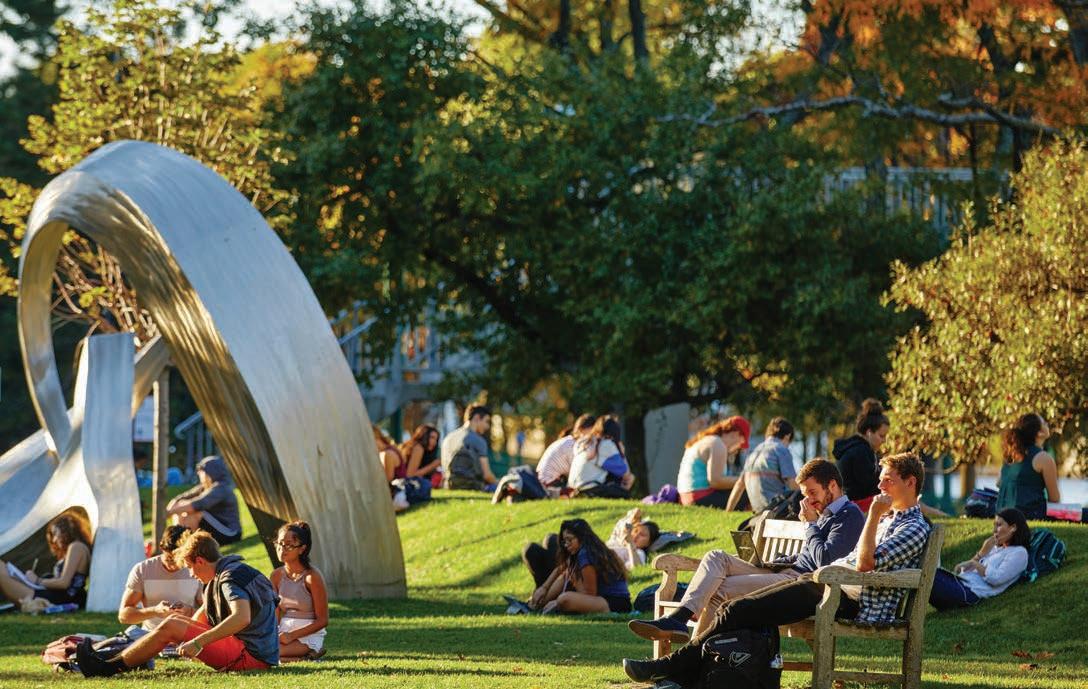








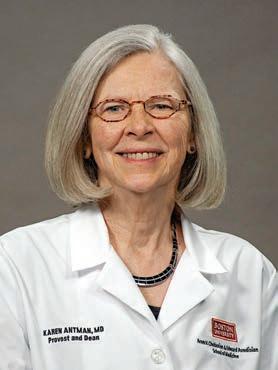
Dear Alumni, Friends, and Colleagues, Hard to believe that we are more than halfway through academic year 2024–25. Our campus is vibrant; research and learning quite evident.
This edition of BU Medicine celebrates exceptional contributions from our alumni, faculty, sta , and students through storytelling, beginning with our cover feature on alumni engaging around the world in global medicine. We learn about their strong desire to help as they collaborate with partners in-country to improve access and availability to care.
We also highlight the new collaboration between our Center for Regenerative Medicine and global biopharma giant GlaxoSmithKline (GSK) to be er understand pulmonary brosis and identify new drug targets to halt or slow its progression.
Our story on the 39th Annual Evans Days celebrates the breadth and depth of medical research from a new generation of young investigators and trainees. Nearly 150 projects were showcased at the two-day event.
We feature second-year medical student Alexis Kruger, a volunteer for America’s VetDogs, which trains service dogs for US veterans, active-duty military, and rst responders. Alexis raised three puppies for VetDogs as an undergraduate student and is on her second as a medical student.
We also highlight Crystal Vejar, a second-year student in the Master of Medical Sciences (MAMS) Program. Crystal is a rst-generation, nontraditional student and a sergeant in the US Army Reserve who is excited to achieve her next career goal of becoming a physician.
Our giving section and donor report (page 29) highlight your generosity. We showcase the $10M gi from Rod Hochman, MD’79, CAS’79, and his wife Nancy J. Hochman, Sargent’77, ’83, that will fund the Rod Hochman Family Clinical Skills & Simulation Center designed to enhance the student physical diagnoses, procedural and clinical coordination skills, and patient communication.
Boston University Medicine
Boston University Medicine is published by the Chobanian & Avedisian School of Medicine Communications O ce.
Maria Ober
Associate Dean, Communications design & production
Boston University Creative Services
contributing writers
Lisa Brown, Gina DiGravio, Doug Fraser, Sarah Rowan
photography
Doug Hyde Photography, Jake Mackey
Please direct any questions or comments to:
Maria Ober
Communications O ce
Boston University Medical Campus
85 East Newton Street, M810H Boston, MA 02118
P 617-358-7869 | E mpober@bu.edu 0325
We also feature stories on the Patient-Centered Outcomes Research Institute’s support for Katherine Iverson, PhD; the Greenwall Foundation’s support for Diana Anderson, MD, MArch; and the US-Israel Binational Science Foundation’s support for Andrew Budson, MD.
Our alumni section (page 38) celebrates Louis Sullivan, MD’58, who received the inaugural Dean’s Lifetime Achievement Award, and Christopher Andry, MPhil, PhD’94, and Jennifer Luebke, PhD’90, who received Graduate Medical Sciences Distinguished Alumni Awards.
Thank you to our donors and friends for your continued commitment to our school and your generous support of our outstanding students, faculty, and sta on the frontlines of medicine and science.
Please enjoy this issue of BU Medicine
Best Regards,
Karen Antman, MD Provost, Medical Campus Dean, Chobanian & Avedisian School of Medicine
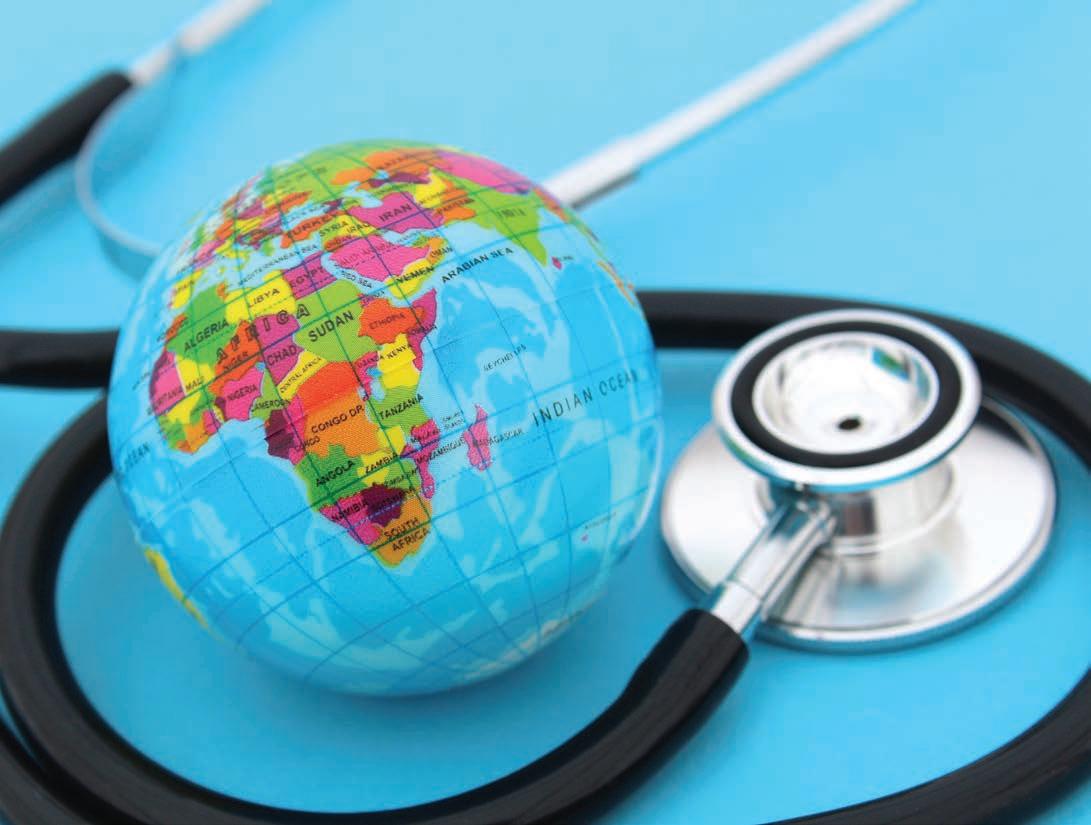
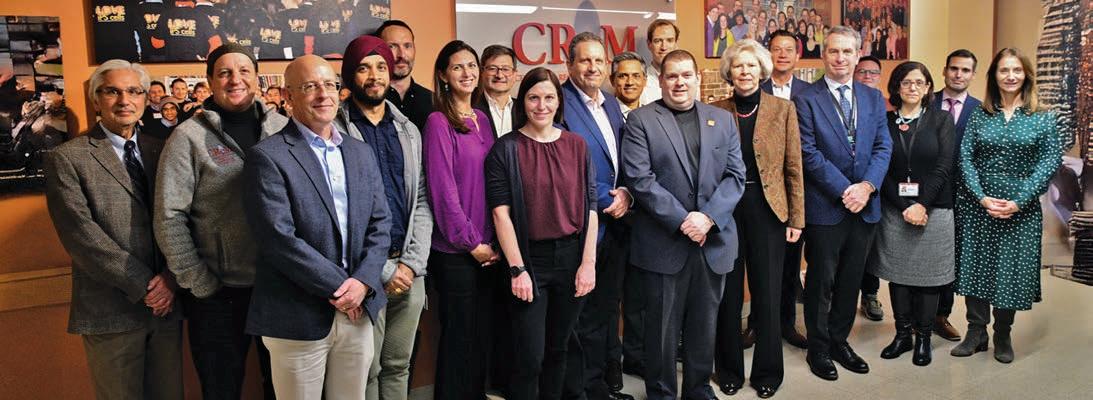
Linkup aims to drive research into pulmonary brosis, a disease with no existing cure
“This exciting collaboration with GSK will help BU, BMC, and CReM to make meaningful progress in the treatment of chronic lung diseases like pulmonary brosis. Together with GSK, we are poised to advance emerging research discoveries into real-world therapies for patients.”
DARRELL KOTTON, MD
It’s a disease that can literally take your breath away—and there’s no cure. As pulmonary fibrosis progresses, it causes scarring in the lungs, making it harder and harder to absorb oxygen into the bloodstream. For many of those with the most common form of the disease, idiopathic pulmonary fibrosis, life expectancy is less than five years.
A new collaboration between the global biopharma giant GlaxoSmithKline (GSK) and researchers from the Center for Regenerative Medicine (CReM) of Boston University and Boston Medical Center (BMC) could bring hope to the millions around the world with the relentless condition, as well as other lung diseases.
Together, they aim to use CReM-developed lung cells to better understand pulmonary fibrosis and to identify new drug targets to halt or slow its progression. United Kingdom–based GSK will provide funding and indirect support.
“This exciting collaboration with GSK will help BU, BMC, and CReM to make meaningful progress in the treatment of chronic lung diseases like pulmonary fibrosis,” says Darrell Kotton, MD, CReM’s founding director.
“Together with GSK, we are poised to advance emerging research discoveries into real-world therapies for patients.”
Pulmonary fibrosis, a type of interstitial lung disease, has a multitude of potential causes, including cigarette smoke, autoimmunity, and disrupted genes. As it gradually scars and sti ens the tiny air sacs in the lung known as alveoli, patients may feel shortness of breath and lose weight. Existing medications can slow the disease’s progression, oxygen tanks can help alleviate symptoms, and a lung transplant might be an option for some patients, but clinicians soon run out of weapons to use against it.
For the past 20 years, Kotton and his team have been using stem cell technology to hunt for ways to study the onset and progression of lung disease. Their work has focused on using patients’ blood to create lung cells in the lab, so they can conduct research outside

“I
give the analogy of a black box ight recorder, because you can replay all the events that led to the malfunction over and over. You can understand the disease and then you can intervene at the set points where you want to stop the progression—and that’s where the drug development action is.”
DARRELL KOTTON, MD

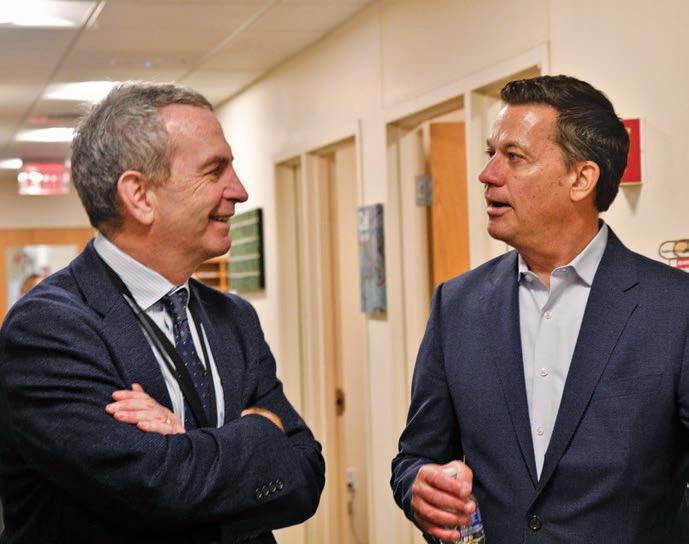
of the body, or ex vivo. It involves a lot of cell reprogramming: turning blood cells into induced pluripotent stem cells (iPSCs), which returns them to an embryonic-like state, then nudging them to develop into lung cells. These cells become, e ectively, a model of the lung, allowing researchers to watch them “turn diseased in front of them,” says Kotton, the David C. Seldin Professor of Medicine.
“I give the analogy of a black box flight recorder, because you can replay all the events that led to the malfunction over and over,” he says. “You can understand the disease and then you can intervene at the set points where you want to stop the progression—and that’s where the drug development action is.”
Working with GSK, CReM researchers will significantly expand their bank of patient specimens, then apply those to modeling disease and developing new drugs.
“We have two applications for these cells,” says Kotton, who is also a pulmonologist and critical care specialist at BMC, BU’s primary teaching hospital. “One is to regenerate lung tissue in vivo through transplantation—we’re very excited and making rapid progress on that, but it’s a long way o . For drug development and discovery, I think it’s ready to go. How soon will new drugs be ready to apply in the clinic? I like to say, sooner than we think.”
“At BMC, we are commi ed to conducting high-quality interdisciplinary research that is grounded in equity: 70 percent of our patient population identify as being people of color, and data suggest that Black patients with pulmonary brosis have worse health outcomes at younger ages compared to Hispanic or white patients.”
MEGAN BAIR-MERRITT, MD, MSCE, BMC’S CHIEF SCIENTIFIC OFFICER AND PROFESSOR OF PEDIATRICS
The linkup’s initial period is three years, and Kotton and his colleagues hope BU and GSK will continue to work together after that.
“Through this collaboration, we are poised to make significant advances in understanding the molecular mechanisms behind pulmonary fibrosis, which could ultimately transform how we treat these devastating diseases,” says Kostas Alysandratos, MD, PhD, an assistant professor of medicine and codirector of the Interstitial Lung Disease Clinic at BMC. Along with stem cell biologist Andrea Alber, a CReM postdoctoral fellow, Alysandratos was one of the key players in developing the lung stem cells that will provide the foundation of the forthcoming work.
“At BMC, we are committed to conducting high-quality interdisciplinary research that is grounded in equity: 70 percent of our
patient population identify as being people of color, and data suggest that Black patients with pulmonary fibrosis have worse health outcomes at younger ages compared to Hispanic or white patients,” says Megan Bair-Merritt, BMC’s chief scientific o cer and a professor of pediatrics at BU’s medical school. “The collaboration with GSK will inform the development of new treatments for lung diseases that help address these disparities and pave the way for a healthier future for everyone.”
GSK is among the biggest pharmaceutical companies in the world. According to Kaivan Khavandi, MD, MRes, PhD, MBA MRCP, its senior vice president and global head of respiratory/immunology R&D, advancing new therapies requires “a deep understanding of the genetic and cellular basis of disease.”
“By working together to establish this scientific discovery collaboration,” he says, “we will combine state-of-the-art
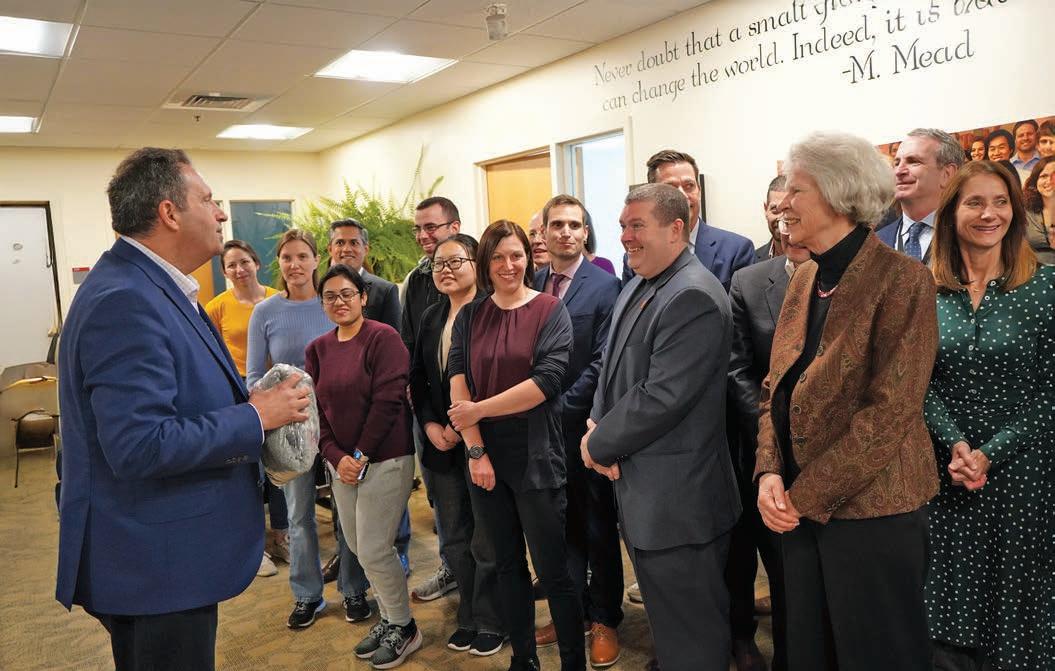
“We can really harness the power of the cells in a much more expansive way.”
DARRELL KOTTON, MD
translational models at the CReM, with extensive multiomic capabilities at GSK, to advance our understanding of the causal biology of fibrotic lung disease and accelerate the discovery of more e ective treatments— which are so desperately needed in this area of respiratory medicine.”
Kotton first became interested in pulmonary fibrosis when he was training as a pulmonologist and became frustrated by the lack of treatment options. The new connection with GSK marks a major milestone in his journey toward providing a solution.
“We can really harness the power of the cells in a much more expansive way,” says Kotton of the collaboration’s potential. “What GSK does best is taking small molecules to a scale and safety level where they can be changed into drugs that can be administered to patients—and much more quickly than we could ever develop those kinds of approaches.”
One other recent CReM breakthrough used stem cell technology to develop cells for potential transplantation into injured lungs to treat damage and disease. And Kotton says it was BU and CReM’s reputation that sparked this new relationship.
“At BU and BMC, we’re known for iPSCrelated lung research and, if a company is interested in applying those models to drug discovery in lung disease, it makes a lot of sense that they find us,” he says. “We like to say all research is translational. I think this is evidence that pursuing basic discovery— developmental biology, secrets of cell fate— inevitably translates.” ●
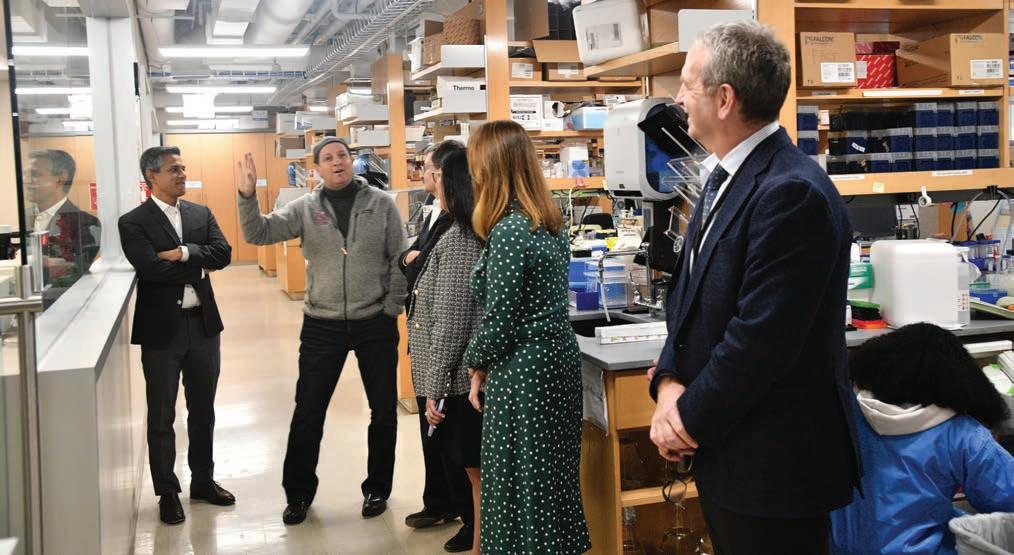
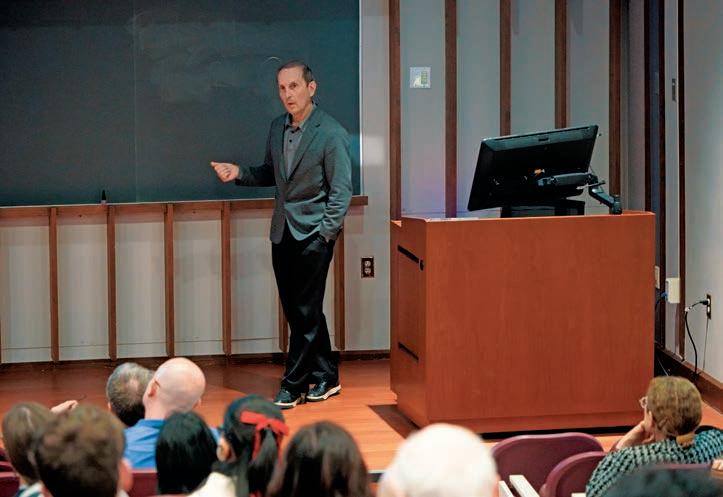
Fo r 39 years, the department of medicine’s Evans Days has showcased the breadth and depth of medical and science research. Held on October 10–11 this year, the two-day annual event celebrated the efforts of a new generation of young investigators and trainees—and the mentors who help them elevate their research to the highest standards possible, potentially launching careers.
David Salant, MD, the Robert Dawson Evans Distinguished Professor of Medicine, took a minute to contemplate the hundreds of onlookers milling around 70 large-screen monitors in Hiebert Lounge that displayed the progress of nearly 150 projects representing the research work of trainees, faculty, and their collaborators on the Medical and Charles River campuses.
“It prepares them to give the same presentations at national meetings and helps them when they are applying for jobs and preparing for their own grant submissions,” Salant said.
Evans Days includes competitions in oral presentation and poster display as well as lectures by faculty and distinguished visiting professors. George Murphy, PhD, a judge for the poster contest, roamed among the brightly lit monitors with tablet in hand.
“Trainee interaction with the faculty is one of the exceptional things that’s happening today,” said Murphy, an associate professor of medicine and cofounder of the Center for Regenerative Medicine. “It’s a protected space that allows them to show o their research in whatever stage of development, and that prepares them to go out into the world, present at outside scientific conferences, and really do well in presenting their data.”
Kelley Anderson is a fifth-year MD/ PhD student heading back into the MD program next spring to complete her journey to a dual degree. Her PhD will be in bioinformatics, and her poster presentation focused on using gene expression to identify features of precancerous lesions. Her research may eventually help predict di erent clinical characteristics of lung adenocarcinoma tumors and will be part of her PhD dissertation.
“Both in clinical medicine and academic research, presenting is such a huge part of the process,” Anderson said. “Any opportunity to present, especially to people who aren’t experts in the field, is very helpful.”
“I was nervous when I was presenting,” admitted Amulya Shastry, a fourth-year mathematics PhD student in the computational biomedicine department. In her first presentation to an audience outside of her lab, Shastry took second place in the oral presentation contest for her research into treatment options for pneumonia that will likely be her doctoral thesis.
A third-year internal medicine resident at BMC, Maria Florencia Martins, MD, came to Boston from her native Argentina, drawn by what she saw as a culture of collaborative, supportive research and education.
“I think BU does a lot of research, with very interesting people doing very varied projects,” she said. “Everyone is welcoming and willing to work together.”
Her poster outlined research into how to improve patient compliance with tuberculosis treatment.
“There are a lot of ways to be a good doctor, and the clinical part is really important. But we are also responsible for advancing science so that we can provide better clinical care for our patients,” Martins said.
The medical school has been actively encouraging and advocating for more medical students to do research with the aim of becoming more complete doctors.
“It’s a great opportunity to share what we’re doing, to reach out to our community and let them know what’s going on,” said second-year medical student Adjoa Fosuhema-Kordie. Her project focused on how to attract Black populations, particularly veterans, to undergo lung cancer screening, which they currently do at half the rate of white populations in the United States.
“I think sometimes research seems so far away from the people it’s actually supposed to help,” Fosuhema-Kordie said. “This is an opportunity to bridge that gap.”
Evans Days also included lectures by two visiting professors and by the winner of the David L. Coleman, MD, Junior Faculty Prize, as well as talks by three researchers working in A nity Research Collaboratives (ARC) that utilize support from the Evans Endowment to facilitate interdisciplinary approaches across the University.
The ARC presenters included Emelia Benjamin, MD, ScM, the Jay and Louise Co man Professor of Vascular Medicine, on “Mentoring and Sponsoring the Next Generation of Women’s Health Leaders,” Elisha Wachman, MD, professor of pediatrics, on “Advancing Research Regarding Substance Use Disorders in Women,” and Joyce Wong, PhD, professor of biomedical engineering and materials science & engineering, on “Biomaterials Science and Engineering for Reproductive Health.”
The David L. Coleman, MD, Junior Faculty Prize was awarded to Jean Liew, MD, MS,
assistant professor of medicine in rheumatology, for the volume and quality of her publications and grant support as well as her exemplary citizenship and mentorship.
“I congratulate all the trainees, the students, and the fellows for the fantastic science we saw presented this morning. It was uniformly excellent and extremely impressive,” said Wilkins Visiting Professor Daniel Drucker, MD, professor of medicine at the University of Toronto and senior scientist at the Lunenfeld Tanenbaum Research Institute at Mt. Sinai Hospital in Toronto.
Drucker was among the first to demonstrate that acute intracerebroventricular administration of the glucagon-like peptide GLP-1 reduced food intake, leading to the use of a whole class of medicines, like Ozempic, to produce significant weight loss with benefits to diabetics and cardiovascular patients.
Drucker said research has produced even more e ective medicines, now largely in late trial phases, that promise greater weight loss and are e ective for a higher percentage of the population. That might
help in the struggle to combat a worldwide epidemic of childhood obesity on which diet and exercise aren’t having an impact.
“The huge challenge is that most people in the world cannot a ord these medicines, and most cannot access them,” Drucker said.
Ingelfinger Visiting Professor Michelle Albert, MD, MPH, FACC, FAHA, and the Walter A. Haas-Lucie Stern Endowed Chair in Cardiology and professor of medicine at the University of California San Francisco, spoke about transforming medicine to address the unmet needs in healthcare.
“What will move the needle forward with actionable items in terms of potential solutions is really studying and deconstructing what the barriers are to entry into our systems,” she said.
For a list of the 2024 awards and poster winners, visit bumc.bu.edu/medicine/dom-awards/ evans-day-research-awards. ●



Nearly

America’s VetDogs trains service dogs for US veterans, active-duty military, and rst responders
ogs have always been part of Alexis Kruger’s life. While she was growing up in Annapolis, Maryland, her family had German Shepherds, a Rottweiler, and Labrador Retrievers. By the time she reached high school, she was fostering abandoned and rescued dogs for two to three weeks until permanent owners were found.
“I probably fostered around 20–25 puppies,” says Kruger, a second-year medical student.
As a first-year undergraduate at the University of Maryland, Kruger discovered America’s VetDogs, which provides service dogs free of charge to US veterans, active-duty service members, and first responders.
“They train and place dogs with veterans, military members, or first responders with any disability, both physical and emotional,” says Kruger, including seizure response dogs, hearing dogs, mobility dogs, and Post Traumatic Stress Disorder (PTSD) service dogs.
According to the America’s VetDogs website (vetdogs.org), it costs more than $50,000 to breed, raise, train, and place one assistance dog. All services are free of charge for the recipient, as the not-for-profit organization relies on donations from individuals, corporations, foundations, businesses, and community groups.
Typically, Kruger gets a puppy between 2–3 months old and keeps it to age 16–20 months. She raised three service dogs as an undergrad and is on her second as a medical student.
“Judy loves every person as if they were her long-lost best friend,” she says of her current service dog, a black Labrador Retriever. The first four dogs were paired with veterans su ering from PTSD.
Annapolis is home to the US Naval Academy so, not surprisingly, Kruger has imme-
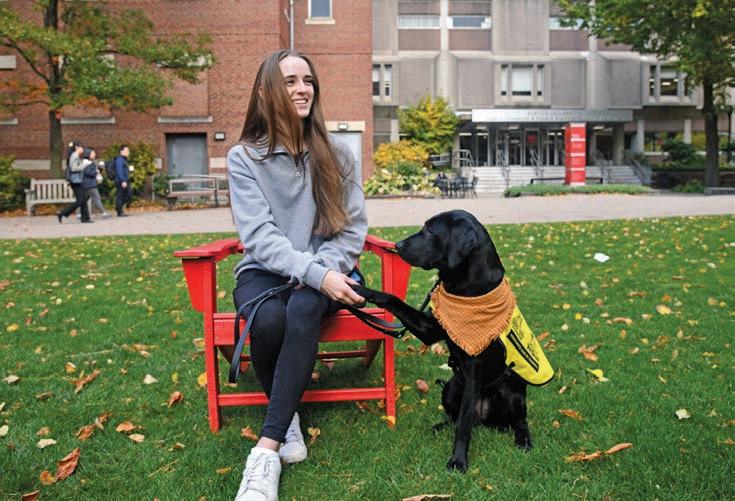
“It’s used as a grounding tool for someone who might be having a tough time in public, ge ing overwhelmed, having panic a acks. The dog sits there with you, with his head on your lap, and it’s very calming.”
ALEXIS KRUGER
diate family who served in the military. She founded Student E orts to Reach Veteran Empowerment (SERVE), a community service group connecting BU medical students with veterans and students serving in the military on topics related to veteran health and other issues.
Majoring in psychology at Maryland, Kruger was interested in veteran health and PTSD.
“PTSD is a psychological condition that is characterized by high levels of anxiety
and high levels of depression,” said Terence Keane, MD, professor of psychiatry and clinical psychology, associate chief of sta for research and development at VA Boston Healthcare System, and director of the National Center for Post Traumatic Stress Disorder’s Behavioral Science division.
That anxiety can present as flashbacks and recurring nightmares related to the traumatic event. Anger, isolation, and negative thinking are other reactions.
“Structure is one of the first casualties of PTSD. People are just so internally focused,” explains Keane. “Anything that structures people’s lives—like the care of a service animal—is good. Getting people up and out of the house, exercising, feeding the dog, all these things add structure.
“Additionally, there is the love, attention, and a ection of the relationship, all of which are probably foreign emotions to a lot of people who are, in many ways, stuck in their own sense of their trauma, their horror, or their fears.”
Keane notes that like many medications, service dogs work well for some people but not others, as the relationship requires updates to training for dog and owner as well as buy-in by the new owner.
Kruger and other volunteer puppy raisers provide a valuable intermediate step in the
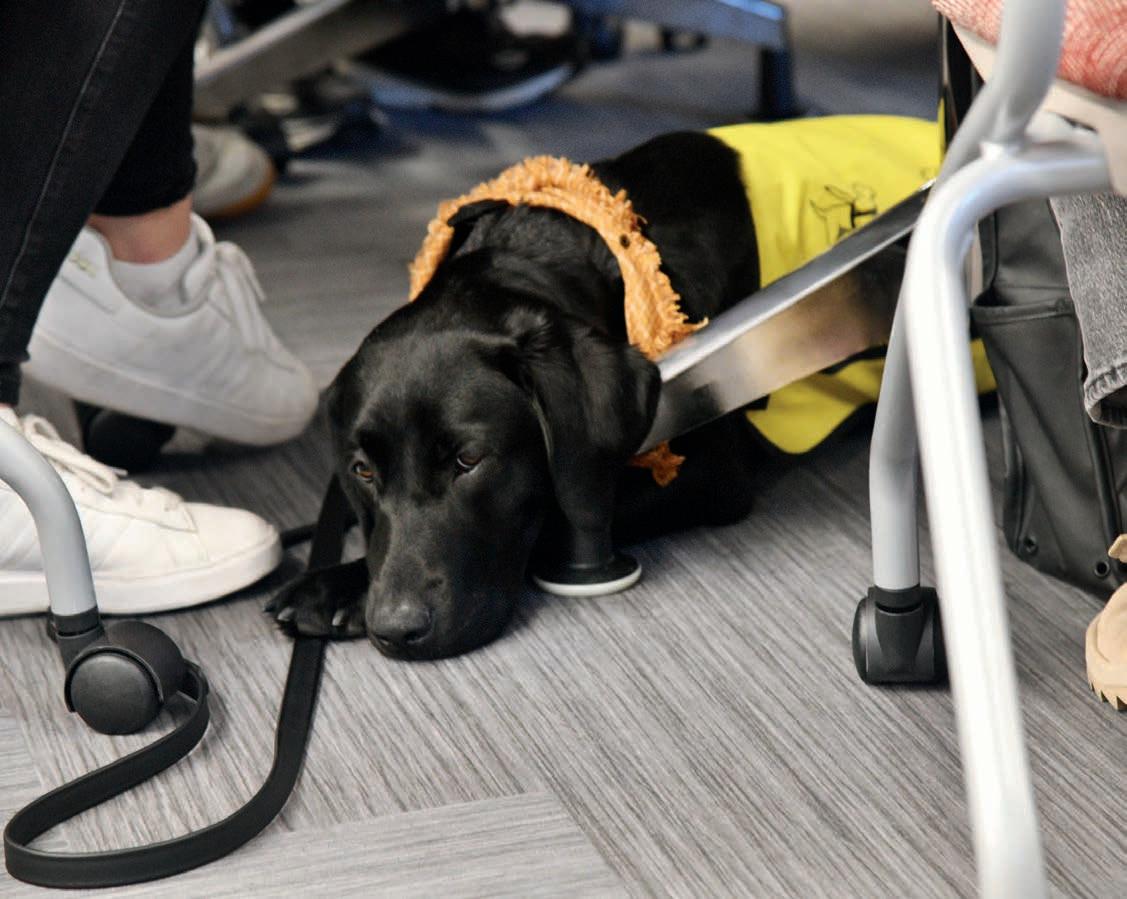
process, training a puppy in basic obedience while socializing it to being around people in areas that aren’t always welcoming, like crowded sidewalks, restaurants and public buildings, public transit, planes, and even college classrooms. They can’t be spooked by sirens or other noises, and they can’t chew or damage anything in the house.
It’s a lot to impart in a year, especially for someone with a busy medical school schedule, but Kruger felt she could handle it.
“At that point she’d already raised three and was on her fourth,” said Melissa Harrington, America’s VetDogs puppy program advisor for the DC/Metro area.
“Once you have someone who’s outstanding like Lexi, you 100 percent follow anything she says.”
Part of her job is to always have Judy with her. They walk the campus, go to class together, run errands, and go into restaurants. When she encounters resistance to access for Judy, Kruger believes it is her mission to educate the public on the role and importance of service dogs. “I’m very comfortable explaining it to people,” she says.
Judy gives Kruger’s life structure as well.
“There are days that I’m sure I would be sitting there at my desk for 12 hours straight studying if I didn’t have this dog that comes over to me and says, ‘I’d like to go for a walk now,’” she notes. While America’s VetDogs’ professional trainers ultimately teach service dogs their specific tasks and skills, Kruger does do some valuable work. One of her
favorite exercises is teaching the dog to put its head in its owner’s lap and exert a downward pressure.
“It’s used as a grounding tool for someone who might be having a tough time in public, getting overwhelmed, having panic attacks,” Kruger says. “The dog sits there with you, with his head on your lap, and it’s very calming.”
After spending a year or more with a dog, it is hard to say goodbye.
“It’s always bittersweet giving them up but seeing them go on to do the job that they are trained for is rewarding,” she says. “It’s everything they’ve ever worked for.” ●

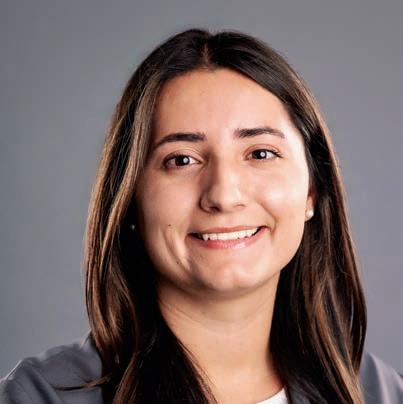

Crystal Vejar is a second-year student in the Master of Science in Medical Sciences (MAMS) Program.
A first-generation, nontraditional student and a sergeant in the US Army Reserve, Vejar took a unique path to Graduate Medical Sciences. Her journey molded her into a strong researcher and future healthcare professional, as well as a passionate advocate for others.
Raised in Utah as the oldest of three siblings, Vejar knew early on that she had an a nity for science—and for helping those around her.
“I was the oldest child, and I think that instilled in me a strong sense of needing to care for others,” she says.
Vejar attended a small, STEM-focused public charter high school before moving across the country in 2016 to study biomedical engineering at New York’s Rensselaer Polytechnic Institute (RPI). After two years, she realized that biomedical engineering was not the right choice for her and decided to make a change.
In 2018, she enlisted in the United States Army, completing basic training at Fort Sill in Lawton, Oklahoma, and surgical technologist training at Fort Sam Houston in San Antonio, Texas, and Walter Reed National Military Medical Center in Bethesda, Maryland.
The following year, Vejar returned to upstate New York to work as a surgical technologist at Samaritan Hospital in Troy and enrolled at nearby Russell Sage College, graduating with a BA in biology and minors in psychology and Spanish in 2021.

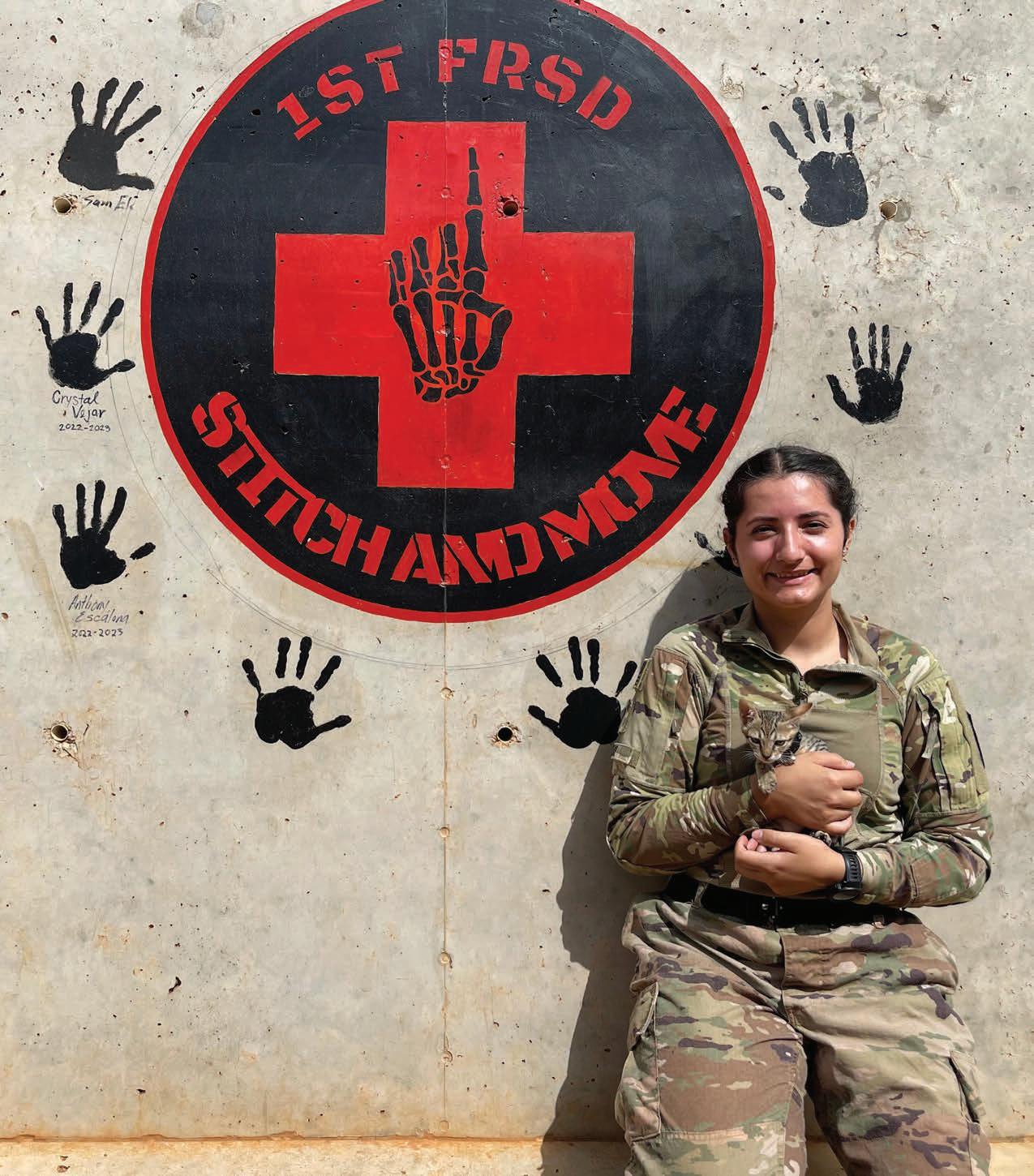
Vejar is a peer mentor for gFIRST, for rst-generation students; gMAV, for military-a liated and veteran students; gSOC, for students of color; and C3’s newly launched Nontraditional Graduate Student Community.

performed emergency medical interventions and surgeries
Following graduation, Vejar worked as a surgical technologist for several months while also planning her wedding to her fiancé, whom she’d met during her freshman year at RPI. She also was accepted to matriculate in the fall 2022 MAMS cohort.
During her honeymoon in August 2022, however, Vejar received notice that she would soon deploy to Somalia with her army unit, the 1st Forward Resuscitative Surgical Detachment (FRSD). She deployed on November 1 and was stationed at a far-forward post, where she assisted with emergency medical interventions and surgeries. Vejar returned to the US in August 2023, arriving in Boston the day before
els to Fort Hamilton in Brooklyn, New York, where she trains others in her unit to make sure they are mission-ready at all times.
From her first day in MAMS, Vejar hit the ground running.
On the cusp of its 40th anniversary, the MAMS Program at BU is one of the oldest and most successful Special Master’s Programs (SMPs) in the United States. The program has helped more than 3,000 students gain admission to medical schools across the country.
“I felt I was a nontraditional student,” Vejar says. “I liked that MAMS focuses on making students fit what medical schools look for, from research to courses. I was living in
Boston already, so it was a natural fit.”
Vejar works in the lab of Matthew Layne, PhD, an associate professor of biochemistry & cell biology. The Layne Lab works to identify novel pathways controlling extracellular matrix synthesis and assembly related to fibroproliferative and connective tissue diseases.
Vejar’s master’s thesis research in the lab focuses on the mechanisms of adipocyte fibrosis, the di erentiation of the adipocyte progenitor cells, and the pathways and signaling mechanisms they go through to become adipocytes and fibrotic adipocytes.
Vejar feels fortunate to have always had “amazing mentors,” of which there are “too many to count.”








“I think it can be empowering and add to your experience in ways that can ultimately be the reason you become successful.”
CRYSTAL VEJAR, MAMS’25
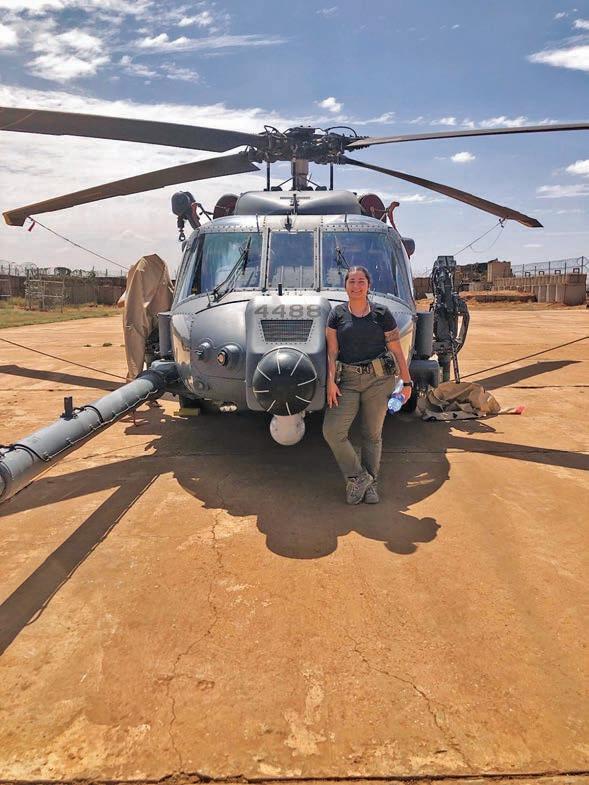
“Being a first-generation student and the oldest in my family, and the first to learn English, very often led me to being put into new and confusing situations,” she says. “I learned to look for help and rely on mentors who had been through the same things, or who could help me find the right people.”
The support she received growing up, as a student and in her professional career, led her to become a mentor to others. At GMS, Vejar works with the Community Catalyst Center (C3), founded in August 2021 to help students acclimate and feel a sense of belonging early in their GMS programs.
Vejar is a peer mentor for gFIRST, for first-generation students; gMAV, for military-a liated and veteran students; gSOC, for students of color; and C3’s newly launched Nontraditional Graduate Student Community.
In early 2024, Vejar became C3’s student intern, playing an integral role in brainstorming and executing C3 programming.
Along with her internship, she serves as a student representative on the GMS Diversity, Equity & Inclusion Steering Committee. Her volunteer work, lived experiences, and passion for medicine have shaped her perspective as a future healthcare professional.
“I think I’ve felt the many struggles American immigrants go through in the US healthcare system, starting with the language barriers, the financial stressors, the complicated forms and appointments to figure out, insurance, and more,” Vejar says. “Being my parents’ translator from an early age really shaped my perspective.”
“I am excited to move on to my next career goal, to become a physician,” says Vejar, who already has received one medical school acceptance and interviewed at several others. She also hopes to remain involved in research.
As Vejar prepares to depart GMS, she advises future students to stay persistent and resilient.
“When the path is as long and di cult as it is for us premed students, deviation from the traditional timeline is very scary,” she says. “But I think it can be empowering and add to your experience in ways that can ultimately be the reason you become successful.” ●

On October 18, a ribboncutting ceremony marked the grand opening of the Cryo-EM Core.
The first cryo-EM core facility on the Medical Campus will enhance the existing cryo-EM capabilities in the department of pharmacology, physiology & biophysics. The facility was partially funded by an NIH Shared Instrumentation Grant to Esther Bullitt, PhD, professor of pharmacology, physiology & biophysics. Expanding electron microscopy facilities and recruiting faculty in structural biology are key priorities for VenetiaZachariou, PhD, chair of the department.
Department of pharmacology, physiology & biophysics faculty along with medical school administrators cut the ribbon signaling the opening of the Cryo-EM Core.
PICTURED IN THE FIRST ROW, FROM LEFT: JAMIE MCKNIGHT, VENETIA ZACHARIOU, BILL LEHMAN, ESTHER BULLITT, CHAD HICKS, AND CHRIS AKEY. BACK ROW, FROM LEFT: HEE-YOUNG PARK, ANDREW TAYLOR, JAMIE VINCIGUERRA, HANNA PERETSKY, AND DEAN KAREN ANTMAN.
Alik
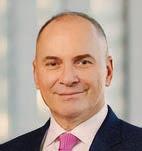
Following a national search, Alik Farber, MD, MBA, has been named Surgeon-in-Chief at Boston Medical Center and James Utley Professor and Chair of Surgery at the Chobanian & Avedisian School of Medicine.
Appointed interim chief and chair of surgery in January 2024, Farber is deeply committed to advancing the department’s goals with a focus on patient care, quality, and advancing innovative research. Under his leadership, the department will continue to cultivate and attract top academic talent and clinicians who are also committed to mentoring the next generation of expert academic surgeons.
Farber is internationally renowned for his clinical expertise and research in the treatment of peripheral artery disease. He has published more than 260 peer-reviewed articles and is coprincipal investigator of the landmark NIH-sponsored Best Endovascular versus Best Surgical Therapy in Patients with Critical Limb Ischemia (BEST-CLI) trial, a multicenter, multispecialty, pragmatic, randomized, controlled trial recently completed at 150 sites across North America, Europe, and New Zealand.
He chairs the BEST-CLI Publications Committee, overseeing the analysis and dissemination of clinical research from the BEST-CLI dataset, with more than 40 manuscripts currently in process. As part of the International BEST-CLI Collaborative, he and 25 leading vascular specialists from across the globe are building on the BEST-CLI evidence base to
answer the most pressing research questions and accelerate global patient-oriented solutions for peripheral artery disease.
Farber began his career in 1999 as a vascular surgeon at Cedars-Sinai Medical Center in Los Angeles. In 2005, he was recruited to Boston Medical Center as a vascular surgeon and joined the faculty of the Chobanian & Avedisian School of Medicine as an assistant professor, becoming a full professor in 2015. Throughout his tenure, he has been involved in a variety of clinical, academic, educational, and operational leadership roles.
A graduate of Brown University and Harvard Medical School, Farber completed a residency in general surgery at Massachusetts General Hospital, a vascular surgery fellowship at Dartmouth-Hitchcock Medical Center, and an endovascular surgery fellowship at Southern Illinois University School of Medicine. He received an MBA from the Heller School for Social Policy and Management at Brandeis University.
tions and an H-index of 215. Her citation ranking internationally is #98 in medicine and #7 for women scientists; nationally her ranking is #71 in medicine and #5 for women scientists.
Benjamin has served in many leadership roles for the American Heart Association since the 1990s and received the 2022 American Heart Association Distinguished Scientist Award. She has devoted substantial e ort to mentoring, faculty development, and coaching of diverse individuals in health sciences and medicine. Her many accolades include the 2020 Alliance for Academic Internal Medicine Diversity and Inclusion Award and the 2024 American Heart Association Louis B. Russell, Jr. Memorial Award for Diversity. Benjamin is the department of medicine’s inaugural vice chair for faculty development and diversity and the inaugural Medical Campus associate provost for faculty development.
Emelia Benjamin, MD, ScM, Named Jay and Louise Co man Professor of Vascular Medicine
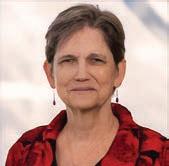
Emelia Benjamin, MD, ScM, has been named the Jay and Louise Co man Professor of Vascular Medicine. A professor of medicine and epidemiology, Benjamin has been a Framingham Study investigator since 1988 and a Boston Medical Center attending cardiologist since 1990.
An international leader in cardiovascular medicine, Benjamin has been continuously funded by the National Institutes of Health since 1998 for research studies of atrial fibrillation, vascular function, inflammation, and chronic pain. She has more than 850 publica-
Christopher S. Huang, MD, Named Section Chief Gastroenterology, Franz J. Ingelfinger, MD, Professor in Gastroenterology

On September 1, Christopher Huang, MD, was named section chief of gastroenterology and Franz J. Ingelfinger, MD, Professor in Gastroenterology. He’d served as the interim section chief of gastroenterology since December 2023.
A graduate of Cornell University and New Jersey Medical School (now Rutgers Medical School), Huang completed his internal medicine residency at Brigham and Women’s Hospital, joined the medical school faculty in 2004, and was promoted to clinical associate professor of medicine in 2018. He has
served as Boston Medical Center’s Director of Endoscopy Services since 2019.
Huang has dedicated his career to excellence in patient care and education, with a particular interest in endoscopy education. As a member of the Training Committee of the American Society for Gastrointestinal Endoscopy, he taught and codirected several national endoscopy courses and coauthored publications on developing core curricula for endoscopic procedures such as colonoscopy, endoscopic ablative techniques, endoluminal stenting, and endoscopic ultrasound.
Huang has published numerous review articles and book chapters on inflammatory bowel disease, colorectal cancer screening, and endoscopic and imaging procedures. He is a member of the Alpha Omega Alpha Honor Medical Society and has been recognized as a “Top Doctor” by Boston magazine.
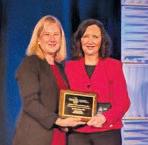
Denise Sloan (right), PhD, professor of psychiatry and senior clinician investigator in the Behavioral Science Division of the National Center for PTSD at VA Boston Healthcare System, has received the Robert Laufer, PhD, Award for Outstanding Scientific Achievement from the International Society for Traumatic Stress Studies.
The award is bestowed upon an individual or group who has made an outstanding contribution to research in the field of traumatic stress. Sloan is the fifth faculty member from the school and center to receive it.
An expert on psychosocial interventions for traumatic stress disorders with a specific interest in e cient and e ective treatment
approaches for post traumatic stress disorder (PTSD), Sloan has worked on the development of novel psychotherapeutic approaches to the treatment of PTSD that produced strong scientific evidence across many forms of traumatic life events including combat, sexual trauma, and intimate partner violence. She has conducted a series of studies that lead to the development of written exposure therapy and a five-session psychosocial intervention and has conducted multiple large-scale treatment studies examining the e cacy and e ectiveness of the treatment.
Robert S. Laufer, PhD, was a sociologist who made early and important contributions to the field of traumatic stress and PTSD through his research on the e ects of war experiences on Vietnam combat veterans. The International Society for Traumatic Stress Studies is dedicated to sharing information about the e ects of trauma and the discovery and dissemination of knowledge about policy, program, and service initiatives that seek to reduce traumatic stressors and their immediate and long-term consequences.
ences, the award aims to advance cancer science and diversify the pool of early stage investigators and approaches to research funded by the NCI. Awarded $2.3 million in NCI funding for five years, Jones focuses on understanding how tumors impact the functionality of blood vessels, which are essential for cancer-fighting immune cells, such as T cells, to infiltrate tumors. His previous research found that losartan, a medication commonly used to treat high blood pressure, helped open blood vessels in breast tumors, allowing more T cells to reach—and potentially, attack—the cancer cells. The award will help him to explore how losartan a ects blood vessels and T cell entry into tumors. He will also use experimental models of breast cancer to measure tumor growth after combining losartan with immunotherapy, a treatment that helps the body’s immune system fight cancer cells.
Dennis Jones, PhD, Named Cancer Moonshot Scholar
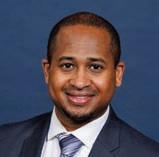
Assistant Professor of Pathology & Laboratory Medicine
Dennis Jones, PhD, has received a National Cancer Institute (NCI) Cancer Moonshot Scholar Award. Jones is one of 11 researchers nationally who will collectively receive more than $6 million in the first year of their research.
Developed to help the White House Cancer Moonshot Initiative achieve the goal of inspiring and supporting world-class scientists from diverse backgrounds, including those from underrepresented groups in the biomedical sci-
His lab will examine breast cancer samples from the Black Women’s Health Study to explore if using losartan and other similar drugs is linked to changes in the tumor’s structure, such as reduced extracellular matrix buildup, which can help more T cells infiltrate the tumor. “If successful, our study could lead to repurposing losartan, an FDA-approved drug, to improve breast cancer treatment by enhancing T cell activity when combined with immunotherapy,” he said.
A basic research scientist with expertise in vascular biology, cancer biology, and immunology, Jones earned his BS in biology from Morehouse College and his PhD in immune biology from Yale University. He completed a postdoctoral fellowship at Massachusetts General Hospital/Harvard Medical School.
The Cancer Moonshot Scholars program is supported by the White House’s Cancer Moonshot Initiative and aligns with NCI’s Equity and Inclusion Program and the NIH’s UNITE Initiative. The Center for Cancer Health Equity leads the Cancer Moonshot Scholars program, with active participation from a trans-NCI steering committee. NCI divisions with subject matter expertise manage the individual grant awards.
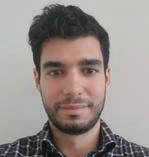
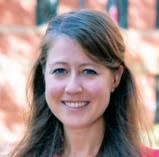
Two junior faculty members, Florian Douam, PhD, assistant professor of virology, immunology & microbiology and a core faculty member at BU’s National Emerging Infectious Diseases Laboratories (NEIDL), and Jessica L. Fetterman, PhD, FAHA, assistant professor of medicine, have received Smith Family Foundation Odyssey Awards. Douam and Fetterman will each receive a two-year, $400,000 grant to pursue pilot projects.
Created in 2017 to fuel junior investigators’ creativity and innovation in the basic sciences, the Odyssey Award supports the pursuit of high-impact ideas to generate breakthroughs and explore new directions in biomedical research.
Transmitted through the bites of infected arthropods such as mosquitos, arboviruses including dengue, yellow fever, chikungunya, and Zika are a significant public health concern for an estimated 4 billion people worldwide—and no treatments are available against any of these pathogens. Following a bite, di erent skin cells respond uniquely to salivary products, allowing the virus to shape the progression and clinical outcome of the viral infection. These processes, however, remain poorly defined.
A viral immunologist studying flaviviruses and coronaviruses, Douam has developed humanized experimental models, identifying and characterizing human
immune mechanisms that govern the virulence of these viruses.
“E orts to develop e ective countermeasures to arbovirus infection have been impeded by the lack of suitable experimental models that can closely mimic the human cutaneous response to a bite from an infected arthropod,” he says.
His project will develop a new experimental model coengrafted with human skin tissue and a human immune system. Using mosquitoes infected with Zika virus, Douam’s research will unravel critical skin mechanisms that promote Zika transmission from the mosquito to the human skin and subsequent dissemination into the organism. His research will enhance our understanding of arbovirus transmission and pave the way for the development of innovative preventative strategies against diseases caused by arboviruses.
A basic and translational scientist studying the intersections of mitochondrial physiology, mitochondrial genetic epidemiology, and cardiovascular disease, Fetterman focuses her work on the contribution of mitochondrial genetic variation and abnormalities to cardiovascular disease in the presence of risk factors such as tobacco product use and diabetes.
Defects in mitochondrial genes result in a spectrum of diseases in humans, ranging from severe pediatric syndromes to common age-related diseases, typically involving the heart and brain. Mitochondrial diseases are diagnosed in an estimated 1 in 4,300 individuals in the United States and there are currently no therapies approved for the treatment or cure of these conditions.
“Our understanding of the genetics and mechanisms of mitochondrial diseases is hindered by the absence of experimental models of human mitochondrial genetics; the inability to manipulate the mitochondrial DNA (mtDNA); and limited access to clinically relevant tissues, including those of the heart and brain,” explains Fetterman.
The award will fund her research into developing, optimizing, and validating an innovative approach for transporting guide RNA (gRNA) into mitochondria to facilitate CRISPR-Cas9 deaminase gene-editing correction of pathogenic mtDNA variants in patient-derived induced pluripotent stem cells (iPSCs).
The Smith Family Foundation is committed to e ecting permanent, positive change in the lives of the residents of Greater Boston, particularly individuals and families in economically disadvantaged communities. The foundation supports the advancement of biomedical research and the expansion of access to high-quality healthcare at safetynet institutions serving low-income individuals and communities. Financial support comes from the Richard and Susan Smith Family Foundation. ●
Our alumni, faculty, and students are engaged all over the world.
By Douglas Fraser





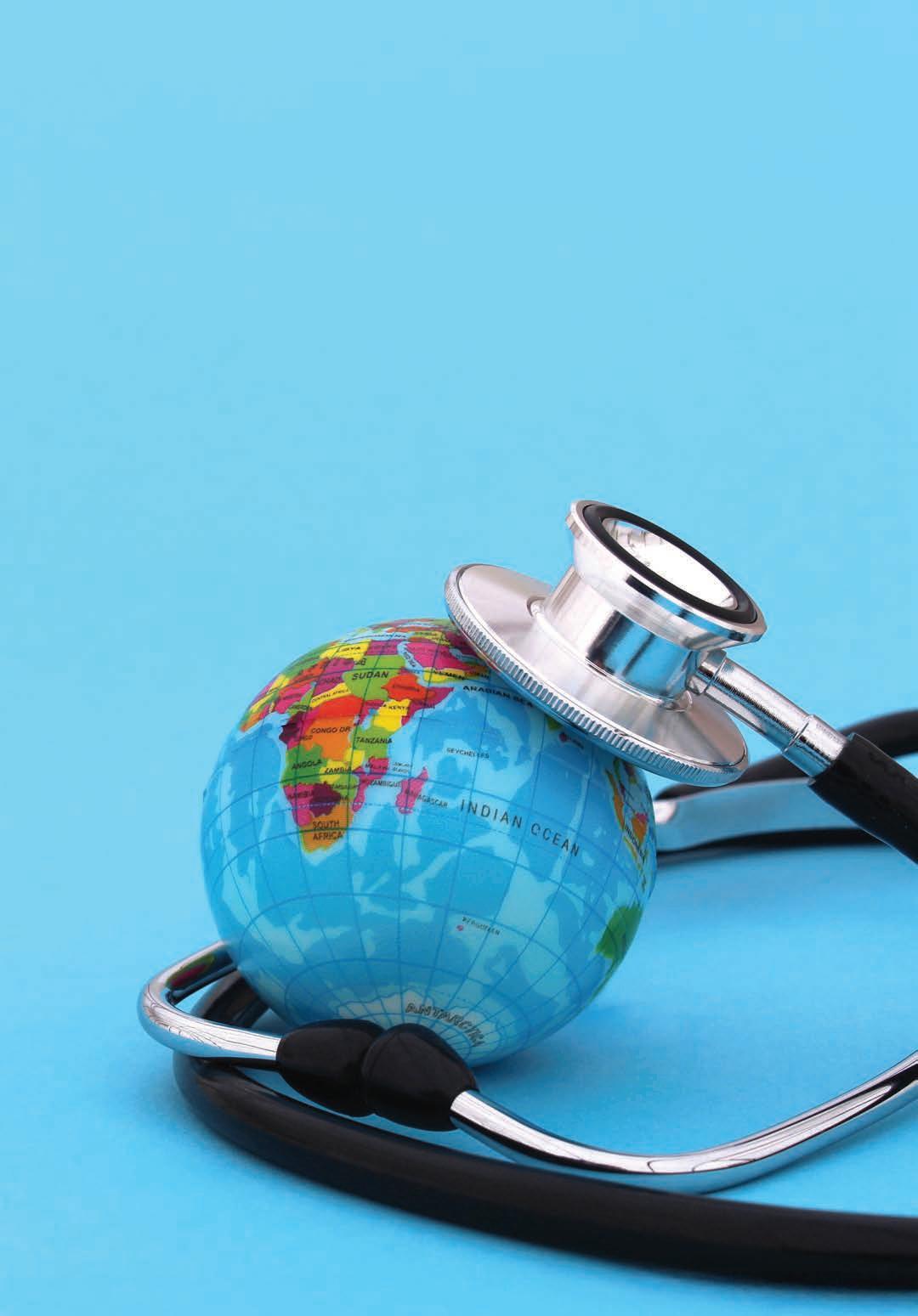
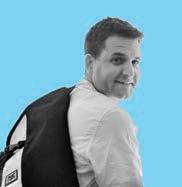
CChristopher Strader, MD’15, MPH’09, first traveled to the Democratic Republic of the Congo in the summer before his second year of medical school to work on a BU-sponsored project. Initially, what struck him was seeing residential front doors tied shut with string.
He asked the physician with whom he was traveling about it and was told that break-ins were epidemic in a war between Congolese soldiers and rebel insurgents, with soldiers using rifle butts to knock o door handles.
“At some point, you just stop putting the door handles back on,” says Strader, now a cardiothoracic surgery fellow at Baylor College of Medicine in Houston, Texas.
Healthcare in Sub-Saharan Africa presents challenges, including political and social unrest, lack of medical personnel and the infrastructure to train them, limited surgical care, and medicine shortages. But Strader found something on his first trip to the Congo that has inspired him to keep working in global healthcare.
“I started doing it because I felt this is the human contract, that we should help each other,” says Strader, who was named a Harvard Medical School Paul
Farmer Global Surgery Fellow in 2018. The fellowship was created to train leaders to tackle inequities in surgical care, education, and research related to global health.
Strader keeps returning to work in low-income countries, as doing so renews his faith in medicine as a force for good. The Congolese physicians he works with aren’t mired in the complexities of electronic medical records or upset because their on-call schedule has changed.
“These men and women show up each day to do what is di cult. They do it for the love of the art of medicine,” Strader says. “Being with people who do it because they love it reminds me why I’m doing it—because I love it.”
From medical students, to midcareer professionals, to retirees with hundreds of medical missions overseas, the desire to do good to help improve global healthcare by creating programs and collaborating with partners in-country to improve access, availability, and a ordability runs strong among Chobanian & Avedisian School of Medicine alumni.
“You go into medicine because you like people; because you want to take care of people,” says Andrew Wexler, MD’80, a retired plastic surgeon. “Working as a volunteer, in low-resource countries, distills the practice of medicine to its essential core. You have skills, these people need your help, and you receive their thanks for doing so. It’s a wonderful feeling and it’s why I went into medicine.”
Wexler, who splits his time between homes in Los Angeles and Cape Cod, has been doing surgical missions for 30 years, traveling to 27 countries where he often cares for children.
“The love of a parent for their child is universal and a palpable energy. When you intervene and help their child, some of that energy comes back to you in the
love and care the parents have for you,” he says. “That feeling is as addicting as a drug, and it makes you want to go back, time and time again, to do the work.”
Wexler does a lot of cleft palate surgery. Sadly, children with facial deformities and their parents are often stigmatized, living isolated from their communities.
“When you fix a child, you fix a family, and you add to a community,” he says. “It’s a bit like throwing stones in the water and watching the circles radiate outward. If we throw enough stones, we can make waves, and those waves can really make a di erence.”
Access to a ordable healthcare is a global problem. According to the World Health Organization/World Bank “Tracking Universal Health Coverage: 2023 Global Monitoring Report,” almost 58% of the world’s population—4.5 billion people—are not covered by essential health services, and 1.3 billion people are pushed into poverty each year by catastrophic out-of-pocket healthcare spending, primarily in lower- and middle-income countries.
Surgery is the most expensive of the global medical missions. But 90% of the world’s poor lack access to safe and a ordable surgical care even though the Global Surgery Foundation has determined that each year, total surgically avertable deaths alone are approximately six times greater than total deaths from HIV, malaria, and TB combined.
“You go into medicine because you like people; because you want to take care of people.”




- Dr. Andrew Wexler



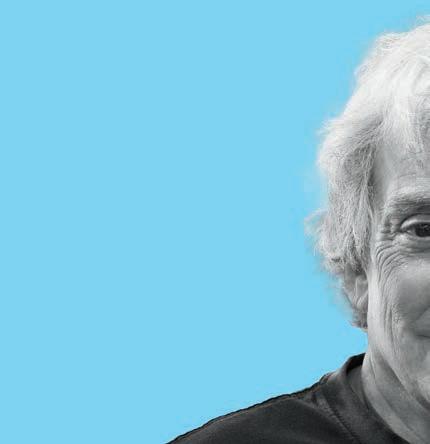



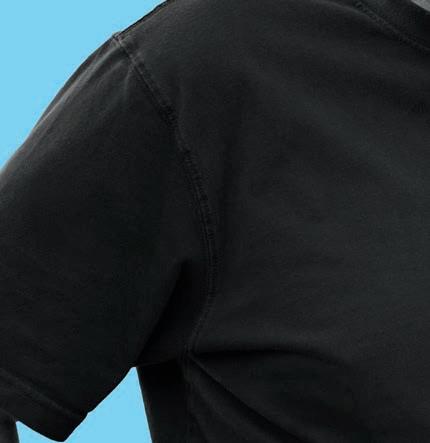

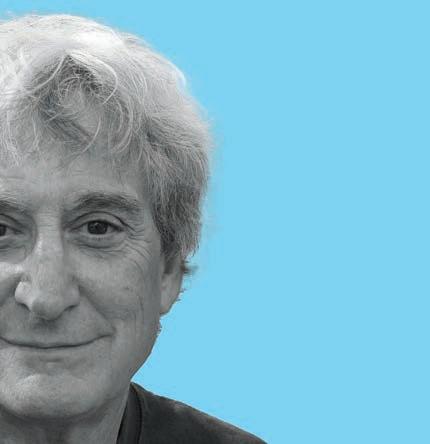




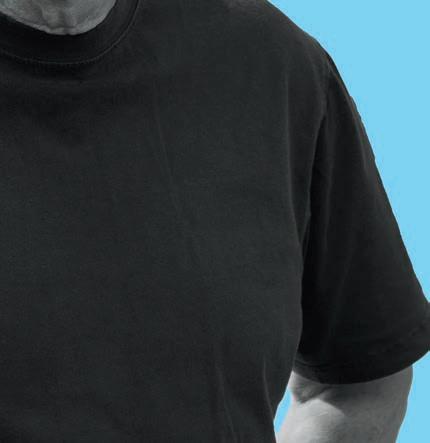

“A lot of injuries don’t get treated,” says John Herzenberg , MD’79, (page 23, seated) a retired orthopedic surgeon specializing in pediatric orthopedics and a surgical technique known as limb lengthening, which uses the bone’s capacity to grow in small increments over time to help heal crippling deformities, some of which are directly attributable to the lack of surgical care.
they had worked on together, asking questions about follow-up care and patient progress.
The drive to help individual patients often leads to the desire to tackle systemic problems like access, availability, and a ordability.
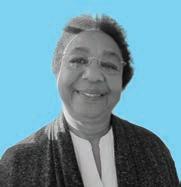
“It is restoring hope, altering a person’s life,” he says. “In many of the cases we treat, if we weren’t there doing it, it wouldn’t be done.”
In countries with limited or no access to surgical care, a femur break, for instance, can be both physically and financially crippling.
“If they don’t have the ability to operate on you, they just put you in traction or a cast and you’ll be lying in bed for three months, not going to work, not making money for your family, and incurring costs for being in the hospital,” says Herzenberg, who has been volunteering and organizing overseas surgical missions for 26 years.
He stresses that the key to successful surgery is follow-up, which was problematic for short-term medical missions until recent technological developments.
“Even in the most remote portions of Africa, people have cell phones,” he says. “I can maintain direct contact with the doctor and with the patient, and it’s almost like I’m there.”
Technology also has improved e orts to train local doctors. Herzenberg was recently in Nepal, working with a team of four local orthopedic physicians.
“We taught them a lot of new procedures. They loved operating with us,” he says. Post-departure, the US surgeons formed a WhatsApp group with the Nepalese physicians, who would send them x-rays of patients
According to Jamel Patterson, MD’88, helping people is part of her Christian faith. Now retired, Patterson was an emergency room physician in New York
City’s public hospitals for most of her career. Originally from Jamaica, she participated in medical missions to her native country, but it was her first mission to Uganda that opened her eyes to the enormity of the global need for healthcare access.
“A lot of people come out when we go to Jamaica, but it’s not like that [in Uganda],” Patterson says. In Uganda, thousands would show up.
“They waited patiently. Nobody pushed; nobody fussed. They sat quietly in the sun, waiting to be seen,” she recalls. “When we were finished, during the debriefing, I cried.”
The disparity of her work in a fully equipped Harlem hospital and what she’d experienced in Uganda weighed on her.
Conversations with other doctors from the medical mission produced an initiative to buy mosquito netting, a malaria preventative, and distribute it in the regions where they’d worked. That led them to form the Ageno Foundation. After consulting with locals, the foundation used donor money to drill deep wells and install pumps that ultimately provide clean water to 500,000 people in Africa and India. Their programs have expanded to include education, economic empowerment, healthcare, and nutrition.
“Healthcare should be universal, for everyone. It shouldn’t be a privilege,” Patterson says. care






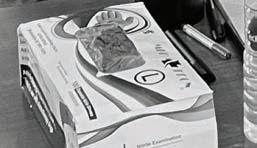






“It is restoring hope, altering a person’s life. In many of the cases we treat, if we weren’t doing it, it wouldn’t be done.”



Early in his career, the goal was to help as many patients as possible, says plastic surgeon Larry Nichter, MD’78 (shown above with the 14th Dali Lama).
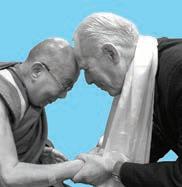


- Dr. John Herzenberg (seated)

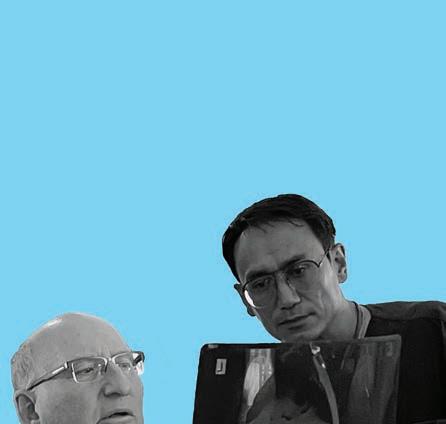


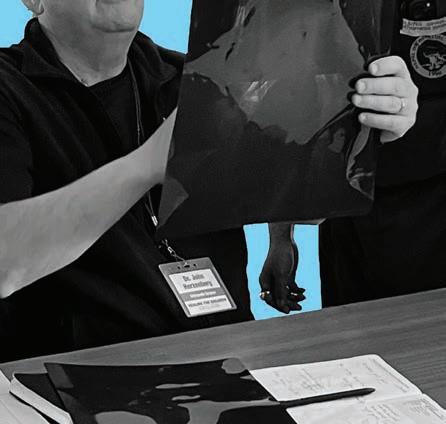




Cleft palate surgery is the most frequently performed procedure for shortterm medical missions. In part, that’s due to the condition’s prevalence in lowand middle-income countries, where factors like poor nutrition, smoking, and genetics make it more likely to occur.
“You see these kids with these wide cleft lips, and they can’t speak, they can’t really eat well, and the whole village is a ected because the mom can’t work; she must stay with the child,” he says. “We operated as fast as we could and as furiously as we could, and we’d do 14, 16 hours of surgery…and we trained no one.”
But on one trip, Nichter decided he’d stay a little longer. He spoke to local surgeons, and they told him the foreign surgical teams undermined the confidence of the local population in the skills of local physicians and surgeons to the point where patients were delaying necessary surgeries until the foreign team returned.
“The [local surgeons] were bright, they had great surgical skills, and they would have loved to work with us, but we didn’t work with them because it was faster to do it ourselves,” Nichter says. Critics of the short-term surgical missions charged that the missions had exhausted the local hospitals’ stock of drugs and surgical and recovery supplies, and also saddled them with high personnel costs due to the increased sta ng necessary to support their busy operating schedule.
Initially, Nichter couldn’t get nonprofits interested in funding trips that would spend part of their time training local providers or expend money purchasing extra supplies to shore up local healthcare capacity.
“The donor always wanted to know ‘How many cases did you do?’” he says. “It was always the same question, but to me the metric of success was how many cases were done after you left.”
In 1999, Nichter founded Plasticos Foundation (now known as Mission Plasticos), an all-volunteer organization with the goal of leaving behind the best, most sustainable footprint by working closely with the local healthcare network and providers. They purchased supplies in-country to put money into the local economy and trained local surgeons and other healthcare professionals onsite and in the US through fellowships.
“The [surgical missions] industry is basically coming around to the model we have at Mission Plasticos,” says Nichter, who recently received the 2024 Noordho Humanitarian Award from the Chang Gung Memorial Hospital in Taiwan.
Sometimes, the mission is intensely personal, immediate, and fraught with risk.
A month after a devastating earthquake struck Armenia on December 7, 1988—leveling three major cities and the surrounding countryside, killing between 25,000 and 50,000 people, and injuring up to 130,000—
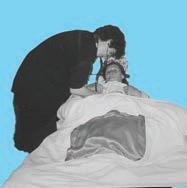
Carolann
Najarian , MD’80, found herself in a very bumpy descent into the country on a cargo plane full of donated supplies.
“We weren’t thinking about our safety,” Najarian recalls. “You don’t think about it because what you’re thinking about is that you have to get help to these people.”


“I felt a sense of duty, a sense of responsibility.”
- Dr. Mardia Stone














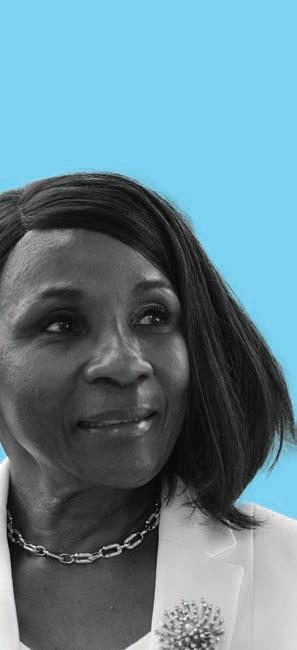







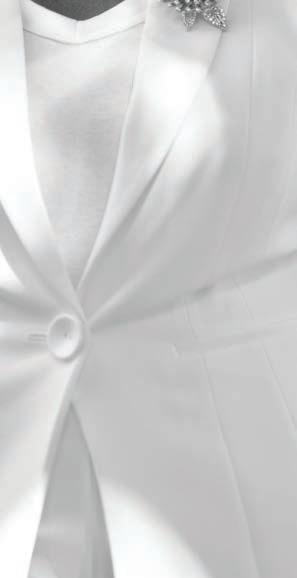





Hospitals and apartment buildings had collapsed. People were living in temporary housing, often metal containers used to transport goods on ships, in winter conditions without heat, water, or insulation. Najarian, whose parents survived the Armenian genocide and emigrated to the US, founded the Armenian Health Alliance to coordinate and deliver medical supplies and expertise to the region. She made more than 60 trips to Armenia and established a primary care clinic and a center for pregnant women.
Although she was there to deliver aid, Najarian saw patients, too. She hadn’t delivered babies since her third-year medical school rotation, but she worked in a maternity ward. The earthquake happened in the middle of a war with Azerbaijan, and Najarian made frequent trips into the war zone on Soviet helicopters that were easy targets, and triaged patients in a front-line surgical unit set up in an abandoned house.
“You are using every single bit of medical training you ever had,” she says. “I’m not a religious person but I do feel there’s some kind of destiny involved. I got my training; I became a doctor, and I was able to answer the call.”
When she returned to Liberia in October 2005, Mardia Stone, MD’78, MPH, found her native country was greatly changed. A civil war had killed between 150,000 and 250,000 people, displaced half the population of 3.5 million, and reduced the country to rubble.
“The Liberia I knew as a child when I was growing up doesn’t exist anymore,” says Stone. “Monrovia was a developing metropolis, but after the war it was like a shantytown.”
Stone was a member of the newly elected, first female president Ellen Johnson Sirfeaf’s transition team, chairing the team focused on health
and social welfare. Her first task was an in-depth analysis of the country’s healthcare system.
Despite the chaos and profound lack of infrastructure, Stone found it rewarding and exciting to deal with a broad range of people, politicians, international aid organizations, activists, and committed Liberians who were working to rebuild the system.
birth. I felt if I had not gone, I would have been remiss. So, once I decided to go, I was fearless.”
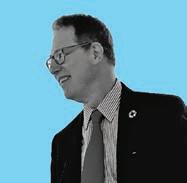
“I had only worked in hospitals or in clinics previously in Monrovia. Chairing the health sector transition team broadened my horizon, and I began to actually enjoy the work and my service to the nation,” she says.
Stone worked in Liberia from 2006 to 2013 and was called back there in 2014 by Tolbert Nyenswah, LLB, MPH, DrPH, who was leading the country’s response to Ebola. At the time, not much was known about the disease except that it was nearly always fatal. Fear and distrust of government and outsiders prevailed. A law made it a crime to hide Ebola patients, physicians and healthcare workers were dying, and government o cials and foreigners were fleeing the country.
“People would literally die in the street,” she says.
Stone traveled on fact-finding missions in convoys guarded by soldiers, driving on rutted and flooded dirt roads to remote villages whose citizens distrusted their government and healthcare workers and feared strangers who might spread the disease. Each time Stone returned from a trip, she’d bag the clothes she’d worn that day and dispose of them. Then she would wipe down her shoes with bleach.
“I felt I had a sense of duty, a sense of responsibility,” she says. “I had an a nity for this place, the land of my
To Joshua Feder, MD’86, living with and managing fear is integral for his patients. For half of his time on any day or week, Feder, a Solana Beach, Californiabased psychiatrist, works pro bono with conflict areas dealing with the psychological impacts of war on children.
Feder is the programmatic lead for the International Networking Group on Peace Building with Young Children and the cochair of the Disaster & Trauma Issues Committee of the American Academy of Child & Adolescent Psychiatry.
“Our big concern is that children are going to be traumatized and radicalized by these wars, whatever side they are on,” he says.
A US Navy veteran who attended BU’s medical school on a Navy scholarship, Feder has traveled to the Middle East, Northern Ireland, and the Balkans on missions supporting those communities and is an adjunct professor at An Najah National University in Nablus on the West Bank.
“I am working with Palestinian, Israeli, and Lebanese communities in the current war, trying to help people to remain responsive to the children and protect them as much as possible from the violence,” he says, adding that psychiatry is poorly funded compared to other international medical missions and that unlike a cleft palate or a broken limb, the damage is hidden and harder to repair. “It’s gratifying work, and our data gives us real hope that children impacted by conflict can go on to build more functional, peaceful societies.” ●

Sepsis is a leading cause of death and disability and a key target of state and federal quality measures for hospitals. In-hospital mortality of patients with sepsis is frequently measured for benchmarking, both by researchers and policymakers. Safety-net hospitals (which face unique challenges, including fewer resources to care for a disproportionately high share of underinsured and high-risk patients) have been reported in prior studies to have higher risk-adjusted in-hospital mortality among patients with sepsis than nonsafety-net hospitals.
However, among critically ill patients, in-hospital mortality may not adequately reflect short-term mortality fairly across all hospitals. In-hospital mortality is influenced by other variables, including hospital transfer practices, that shift the attribution of shortterm death from the hospital to other sites. Safety-net hospitals may have di erent access or ability to transfer patients compared to nonsafety-net hospitals.
In a study published in JAMA Network Open, BU researchers found that safety-net hospitals have higher
The researchers performed a retrospective analysis of patients with sepsis who were age 66 and older.
in-hospital mortality than nonsafety-net hospitals, but their 30-day mortality—an unbiased measure of shortterm mortality—is not di erent.
“While the differences in mortality rates are numerically small, the difference in outcome metrics is enough to significantly affect hospital rankings. Current or future state and federal quality measures that use in-hospital mortality as a quality metric may unfairly penalize safety-net hospitals,” explains corresponding author Anica Law, MD, MS, assistant professor of medicine.
The researchers performed a retrospective analysis of patients with sepsis who were age 66 and older and were admitted to an intensive care unit between January 1, 2011, and December 31, 2019, at both safety- and nonsafety-net hospitals.
“Although in-hospital mortality is often selected as an outcome measure because of its availability in claims databases and hospital medical records without need for post-hospitalization follow-up, the 30-day measure is important to accurately understand true short-term mortality rates,” Law says. ●

The largest chronic traumatic encephalopathy (CTE) study to date has found a new link between playing contact sports and the development of a movement disorder known as parkinsonism.
The study of 481 deceased athletes by researchers at the school and VA Boston Healthcare, published in JAMA Neurology, reveals that most individuals with CTE developed parkinsonism, and CTE pathology appears to drive the parkinsonism symptoms in most cases.
Parkinsonism is a condition characterized by symptoms similar to Parkinson’s disease such as tremors, abnormal slowness of movements, or abnormal sti ness of one’s arms or legs. It long has been associated with traumatic brain injury and CTE in boxers. However, the specific pathologies underlying these symptoms in CTE were unknown.
Parkinson’s disease is classically associated with the buildup of proteins called Lewy bodies in brain cells, but researchers found that 76% of individuals with CTE and parkinsonism did not have Lewy body pathology.
Understanding Neurologic Injury and Traumatic Encephalopathy
Subjects of the study had donated their brain to the Understanding Neurologic Injury and Traumatic Encephalopathy (UNITE) brain bank at the BU CTE Center. Those with parkinsonism were compared to those without to identify the types of pathologies that may explain why some individuals with CTE develop these symptoms and to examine relationships with duration of contact sports play.
This study underscores the importance of understanding the long-term e ects of repetitive head impacts and the need for preventive measures in contact sports to mitigate the risk of neurodegenerative diseases like CTE and parkinsonism.
“We were surprised to find that most individuals with CTE and parkinsonism did not have Lewy body pathology,” says Thor Stein, MD, PhD, associate professor of pathology & laboratory medicine at BU and VA Boston Healthcare, and one of the corresponding authors of the study. “Rather, subjects with parkinsonism were more likely to have more severe CTE-related brain cell death in a region of the brainstem important for controlling movement.” ●
Sickle cell disease is a common genetic disorder characterized by periodic occurrences of pain—referred to as “vaso-occlusive episodes”—experienced repeatedly through life when sickled cells obstruct blood vessels. The degree of pain may range from a mild discomfort to a severe, disabling pain requiring treatment in a hospital.
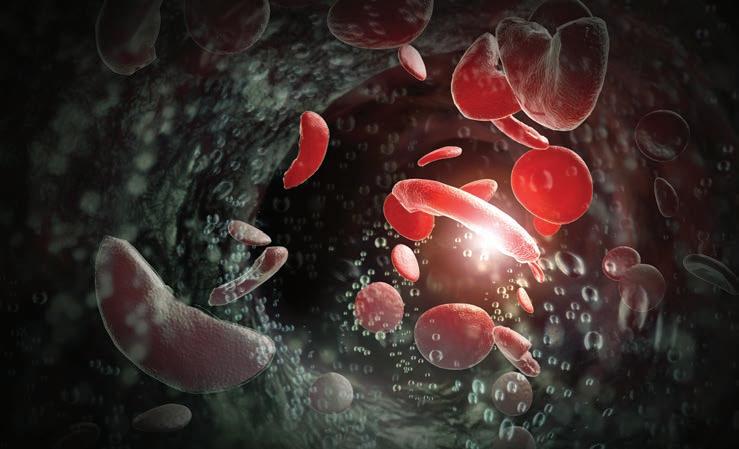
A study published in JAMA Internal Medicine by researchers at the Chobanian & Avedisian School of Medicine, Boston Medical Center’s Center of Excellence in Sickle Cell Disease, along with the Boston University Evans Center for Implementation and Improvement Science, found that hospital-admitted patients who received the fluid Lactated Ringer’s—a solution used rather than normal saline to replace water and electrolyte loss in patients with low blood volume or low blood pressure—had shorter hospital lengths of stay, lower 30-day readmission risk, and fewer days of intravenous opioid medications for pain control compared to those who received normal saline.
“Currently, patients with sickle cell disease who are admitted to the hospital for vaso-occlusive pain episodes usually receive normal saline, and clinical decision support tools presently recommend normal saline. However, our results call these recommendations and current practice into question,” says corresponding author Nicholas Bosch, MD, MSc, assistant professor of medicine.
Researchers used a large database that included patient data from more than 1,000 US hospitals. They identified patients with sickle cell disease and vasoocclusive pain episodes who were started on Lactated Ringer’s solution or normal saline on the first day of hospitalization, then used machine learning models to compare the rates of outcomes between the two. ●

New continuous glucose monitoring sensors—small sensors that penetrate the skin to measure glucose levels in real time—are now hitting the wearables market for use among individuals without diabetes. Despite a lack of research showing that using these sensors improves health outcomes in individuals without diabetes, there is a growing interest among this population. To date, there have been no large studies describing normative glucose ranges for nondiabetics.
Researchers used a large database that included patient data from more than 1,000 US hospitals.
“Many individuals without diabetes are becoming interested in using continuous glucose monitors and two major manufacturers of glucose monitoring sensors, Dexcom and Abbott, just launched products that can now be bought over the counter. It is important for people to know what the “normal” ranges of glucose levels are so they can interpret their own continuous glucose monitor data,” explains Nicole L. Spartano, PhD, assistant professor of medicine and corresponding author of a Journal of Clinical Endocrinology & Metabolism study that found non-diabetic individuals using continuous glucose monitoring sensors spend a much larger period of the day with elevated glucose levels than was previously thought. Not only do these findings contribute to the understanding of the physiological glucose range of people without diabetes, but they also serve as a reference for both patients using these sensors and their clinicians.
Middle-age and older adults from the Framingham Heart Study Third Generation wore the Dexcom G6 Pro for at least seven days on their arm or abdomen. The sensors measured glucose levels in the interstitial fluid (under the skin) every five minutes throughout their participation. They observed that normoglycemic participants (without traditional diabetes risk factors: elevated blood glucose or HbA1c) spent, on average, approximately three hours a day (12.1% of the time) with glucose levels >140mg/dL and many even experienced glucose levels >180mg/dL. Previous research from much smaller studies suggested that individuals with normoglycemia spent very little time above even the 140mg/dL glucose range. ●

Scan for a complete list of the school’s FY24 donors.
With great appreciation, the Boston University Chobanian & Avedisian School of Medicine recognizes our donors for their contributions this past year. Their generosity supports the vital study and practice of medicine and research, and we deeply value the impact they have made on the school, on our students, and on research.
GIVING LEVELS:
$100,000–$249,999 Bronze members
$250,000–$499,999 Silver members
$500,000–$999,999 Gold members
$1,000,000+ Platinum members
Keefer Society Recognition
• Invitation to the annual Chester S. Keefer, MD Society Dinner
• Honorary prism
■ 2024 Donor
■ Deceased
■ New Keefer Member
Thank you, donors.
This year, the FY24 (July 1, 2023, to June 30, 2024) Chobanian & Avedisian School of Medicine donor rosters are available online. In this issue, only the Dean’s Advisory Board and the Chester S. Keefer, MD Society are listed. For a complete list of FY24 donors, including all individual and foundation giving, please scan the QR code above or visit our website at bumc.bu.edu/camed/giving/who-gives
The Chester S. Keefer, MD Society • The Chester S. Keefer, MD Society is named in honor of distinguished physician and scientist Dr. Chester S. Keefer, who served as chairman of the department of medicine, dean of Chobanian & Avedisian School of Medicine, and director of Boston Medical Center. Dr. Keefer was responsible for laying the foundation for the medical center and as the dean of the school, he established a tradition of cutting-edge research that continues to this day.
The Chester S. Keefer, MD Society recognizes individuals whose personal philanthropy has helped advance the school by supporting the research and educational mission of Chobanian & Avedisian School of Medicine. In memory of Dr. Keefer, we honor the outstanding generosity of donors whose lifetime contributions to the school have reached $100,000 or more.
Joel J. Alpert ■ and Barbara W. Alpert (SPH’79)
Edward Avedisian (CFA’59,’61, HON’22) ■ and Pamela A. Avedisian (HON’23) ■
Merwyn Bagan (CAMED’62, SPH’95) and Carol J. Bagan
Jag Bhawan and Pratibha G. Bhawan
Nancy L. Bucher ■
Howard D. Buzzee ■
Shamim A. Dahod (CAMED’87, CGS’76, CAS’78) and Ashraf M. Dahod ■ Richard H. Egdahl, MD ■ and Cynthia Taft (GRS’77) ■
Ralph G. Ganick (CAMED’67, CAS’67) and Lois B. Ganick ■
Alan Gerry and Sandra Gerry
Jonathan P. Gertler (Questrom’99) and Jane R. Clark ■
Albert M. Ghassemian ■
Audrey & Martin Gruss Foundation
Lewis Heafitz and Ina B. Heafitz
Rod F. Hochman (CAMED’79, CAS’79) and Nancy J. Hochman (SAR’77,’83) ■
Stephen R. Karp (CAS’63) and Jill E. Karp
Sarkis J. Kechejian (CAMED’63) ■
Stanley H. Konefal (CAMED’47) ■ and Catherine M. Konefal ■
Sherry M. Leventhal and Alan M. Leventhal (HON’09)
Inez Lopez ■ Frank J. Miselis (CAMED’45) ■ and Theodora T. Miselis ■
Carl A. Olsson (CAMED’63) ■ and Mary D. Olsson
Peter T. Paul (Questrom’71)
Jerome S. Serchuck ■ and Joan S. Serchuck ■ Richard C. Shipley (Questrom’68,’72, HON’22) ■
Wesley R. Skinner ■ and Charlotte A. Skinner ■
Jack N. Spivack ■
Christine E. Stiefel ■
Helen L. Tarlow ■ and Sherwood J. Tarlow ■
Diane Tauber and Laszlo N. Tauber ■ GOLD
Norman W. Alpert and Jane D. Alpert ■
Karen H. Antman and Elliott Antman ■
Nancy Baler
Anita B. Barkan (CAS’46) ■ and Donald B. Barkan (CAMED’45) ■
Paul C. Burke and Gloria J. Burke ■
Elizabeth C. Dooling (CAMED’65) ■
George A. Finley III and Phyllis A. Finley
Harold M. Ginzburg (CAMED’68, CAS’68) and Jenny Boyer ■
John L. Hall II (CAS’65) and Ann T. Hall
Joseph B. Mizgerd and Ann F. Mizgerd ■ ■
Paul F. Nace, Jr.
Tania J. Phillips and Je rey S. Dover ■
Joelyn L. Rohman and Michael Rohman (MED’50) ■ ■
Albert Rosenthaler and Debbie Rosenthaler
Paul Rothbaum and Jean Rothbaum ■ Elayne Russek ■
Thomas J. Ryan ■ and Nancy T. Ryan
Robert E. Schiesske (MET’78, Questrom’82) ■
Lee B. Silver (CAMED’82, CAS’82) and Rachelle L. Silver ■ Sumner Stone (CAMED’58) and Martha Skinner ■ Deborah W. Wilson (GRS’72) and John Wilson ■ Andrew Yee and Mirta Yee
SILVER
Erika Ebbel Angle (CAMED’12) and Colin Angle
William Y. Au (CAMED’55, CAS’51) ■ and Beverly N. Au ■ ■
Donna R. Barnard (CAMED’65) and Douglas E. Barnard (CAMED’65) ■ Gerald Besson (CAMED’50) ■ and Eleanore S. Besson ■
Mary Ann Blount and James A. Blount, Jr.
Helen L. Burr ■ and George Burr ■
David J. Caron and Susan M. Caron
Lin Castre and Abraham D. Gosman ■ Richard J. Cavell (CAMED’61) and Bonnie Cavell
Ann C. Cea (CAMED’67) and Anthony Tedeschi ■ Aram V. Chobanian (HON’06) ■ and Jasmine Chobanian ■
Andrew B. Crummy, Jr. (CAMED’55) and Elsa E. Crummy ■ ■
Jodi Dome Linger and Nicholas T. Linger ■
Idea S. Fiering ■ Frederick L. Fox (CAMED’68) and Gail P. Fox ■ ■
Laurie Girand and Scott McGregor
Burton P. Golub (CAMED’65) and Lee H. Golub ■
DEAN’S
John T. Avellino ■ Gabriella J. Avellino, MD (CAMED’09,’13)
Deb Boedicker ■
Elizabeth R. Brown, MD ■
Richard J. Catrambone, MD, DMD (CAMED’92)
Jane R. Clark, MD ■
Larisa E. Connors, MD (CAMED’98) ■ Suzanne Cutler, PhD (Questrom’61) ■
Shamim A. Dahod, MD (CAMED’87, CGS’76, CAS’78) ■
David R. Edelstein, MD (CAMED’80) ■
Mary Jane R. England, MD (CAMED’64, Hon.’98) ■
Joseph S. Fastow, MD (CAMED’70)
Maurice R. Ferré, MD (CAMED’92, CGS’81, SPH’92) ■
Jonathan P. Gertler, MD (Questrom’99) ■ Shahram S. Gholami, MD (CAMED’96) ■
Burton P. Golub, MD (CAMED’65) ■
Rod F. Hochman, MD (CAMED’79, CAS’79) ■
Christine S. Hunter, MD (CAMED’80, CAS’80) ■
Donald Martin Kaplan, MD (CAMED’73) ■ Sarkis J. Kechejian, MD (CAMED’63) ■ Reshma Kewalramani, MD (CAMED’98, CAS’98) ■
Sherry M. Leventhal
Douglas M. Macdonald, PhD (CAMED’98, GRS’92) ■
J. Kenneth Menges, Jr., Esq (Questrom’79) ■ Sarita A. Mohanty, MD, MPH (CAMED’98) ■ James A. Nassiri, MD (CAMED’97,’01) ■ Daniel J. Oates, MD, MPH (CAMED’00, CAS’00, SPH’05) ■
Peter T. Paul (Questrom’71) ■ Albert Rosenthaler
Pedram Salimpour, MD (CAMED’96,’00) ■ Leslie K. Serchuck, MD (CAMED’90) ■ Emily Wise Shanahan, MD (CAMED’09) ■ Richard C. Shipley (Questrom’68,’72, Hon.’22) ■ Lee B. Silver, MD (CAMED’82, CAS’82) ■ Rachelle L. Silver ■
Louis Wade Sullivan, MD (CAMED’58, Hon.’90) ■ John K. Terzian, MD (CAMED’82, CAS’78) ■ Patricia Janine Williams, MD (CAMED’89, CAS’84) ■ Deborah Whittaker Wilson, PhD (GRS’72) ■ ■ FY24 Donor
New DAB Members in Italics
Robert C. Green and Sally E. McNagny
Hideo H. Itabashi (CAMED’54, CAS’49) ■ and Yoko O. Itabashi ■
Donald M. Kaplan (CAMED’73) and Edna E. Kaplan (COM’88) ■ Reshma Kewalramani (CAMED’98, CAS’98) and Abhijit R. Kulkarni (ENG’93,’97) ■
Joseph J. Konefal (CAMED’77) and Karen G. Konefal ■
Lenore Larkin and Harold S. Larkin ■
Patricia M. Leavitt (CAS’54, CAMED’58)
Susan E. Leeman
Henry T. Lew (CAMED’62) and Winifred Lew ■ ■
Douglas N. MacInnis (CAMED’46) ■
Barry M. Manuel (CAMED’58, CAS’54) and Patricia D. Manuel (SON’78, Wheelock’86) ■
Rita Z. Mehos
Steven A. Miller (CAMED’70, CAS’70) and Jacqueline H. Miller (CAS’70) ■
John H. Nichols, Jr. ■
Simon C. Parisier (CAMED’61) and Elaine S. Parisier ■
Peter E. Pochi (CAMED’55) ■
Je rey D. Tripp and M. Douglass Poirier (CAMED’76, CAS’73) ■
Allen Questrom (Questrom’64, HON’15) and Kelli Questrom (HON’15) ■
Ronald L. Ragland (CAMED’82) ■
Alexander M. Rodger ■
Paulette Samowitz ■
Richard D. Scott and Mary Scott
Louis W. Sullivan (CAMED’58, HON’90) and E. Ginger Sullivan ■
Mary U. Taylor ■
A. Raymond Tye (Questrom’47) ■
Martin L. Vogel (CAMED’53) and Phyllis M. Vogel ■
Arthur B. Wein (CAMED’39) ■ Madeline Wikler and Joseph M. Wikler ■
Amber Wong
Arnold Wong, Jr.
Jeremiah O. Young (CAMED’62) ■ and Beverly A. Young
Lily M. Young (CAMED’65) and John G. Johansson ■ BRONZE
Anonymous (4) ■
Carmela R. Abraham and Menachem E. Abraham
Winston D. Alt (CAMED’80) and Deborah A. Gribbon
Rahul S. Anand (CAMED’01, CAS’97)) and Meredith Anand ■
Gerhard R. Andlinger ■ and Jeanne D. Andlinger
Michael L. Apuzzo (CAMED’65) ■
John T. Avellino and R. Ellen Avellino ■
Ruth M. Batson (Wheelock’76) ■
Robert M. Beazley ■
Melvin R. Berlin ■ and Randy L. Berlin
Deb Boedicker and Mackenzie Boedicker ■
David G. Bradley and Katherine B. Bradley
Yvonne K. Brockman and Stanley K. Brockman (CAMED’55) ■ ■
Alan J. Brody
Elizabeth R. Brown ■
Richard J. Catrambone (CAMED’92) and Sophia Catrambone
Robert D. Champion and Marjorie Champion
Harold N. Chefitz (COM’55, CGS’53) and Charlotte M. Chefitz ■ Hsi-Pin Chen (CAMED’96,’96, CAS’89, SPH’91) and Kenneth E. Hancock (ENG’92,’01) ■ Yi-Chuan Ching (CAMED’58) and Helen Yu-Ching ■ ■ David J. Chronley (CAMED’74) and Marianne K. Chronley ■
Michael J. Critelli and Joyce M. Critelli
Suzanne Cutler (Questrom’61) ■
Clare L. Dana (CAMED’69) ■
R. Gordon Darby ■ Paul R. Dooling ■ and Sandra A. Danussi
E. Elaine Erbey (Wheelock’72)
Joseph S. Fastow (CAMED’70) and Ellen K. Fastow
Maurice R. Ferré (CAMED’92, CGS’81, SPH’92) and Maria D. Ferré ■ Joseph T. Ferrucci and Brenda Ferrucci
Samuel Finkielsztein and Gala Finkielsztein
Charles N. Freed ■ and Marlene Freed
Patricia L. Freysinger (SON’82)
Ronald S. Gabriel (CAMED’63) and Pamela Hobbs ■ Shahram S. Gholami (CAMED’96) and Neda Gholami ■ Godley Family Foundation
Malcolm Gordon (CAMED’48) ■ and Nan Miller ■ Donald J. Grande (CAMED’73) and Elena M. Grande ■
David T. Greenleaf (CAMED’65) and Katherine O. Greenleaf ■ Jack C. Guden ■ Haynes Family Foundation ■ Lea Highet and Ian Highet
Marvin J. Ho man (CAMED’47) ■ Michael F. Holick and Sally A. Holick
Thomas R. Insel (CAMED’74, CAS’72, HON’20) and Deborah J. Insel (Wheelock’71) Je rey R. Jay (CAMED’83, CAS’83) and Mary Ellen A. Jay ■ Denise S. Katsaros (Wheelock’69) and Arthur T. Katsaros ■ Earl G. Kendrick, Jr. and Randy Kendrick The Kessler Family Nasir A. Khan ■ Elaine B. Kirshenbaum (CAS’71, Wheelock’72, SPH’79) ■ and Howard D. Kirshenbaum ■ Shirley P. Klein (CAMED’68, CAS’68) ■ Rose Ann Kornfeld and Lewis F. Kornfeld, Jr. ■ Lawrence E. Langsam (Questrom’57) and Hannah S. Langsam
Estella I. Leach ■ Richard S. Leghorn ■ Ruth R. Levine ■ and Martin J. Levine ■ Rita E. Loos ■ Philip H. Lovett and Beatrice Liu ■ ■ James H. Lowell, II and Susan W. Lowell
The Estate of Lillian A. Luksis
Jules N. Manger (CGS’66) ■ and Janis G. Manger ■ Rocco S. Marino (CAMED’42) ■
Allan P. Markin and Patricia Markin
Hubert W. McDonald and Ann S. McDonald ■ JoAnn McGrath ■ Robert B. Melikian (CGS’60, CAS’62) ■ Ruth A. Moorman (CAS’88, Wheelock’89,’09) and Sheldon N. Simon ■ Charles Mosesian ■
Peter J. Mozden (CAMED’53) ■
Carolann S. Najarian (CAMED’80) and K. George Najarian ■ John Noble ■ and Ewa Kuligowska
Wilson Nolen and Eliot Nolen
Zein E. Obagi and Samar A. Obagi
Paul I. Ossen (CAMED’43) ■
William Patty and Eliot Patty
Louise E. Penta and P. A. Penta (CAMED’51) ■
Carol C. Pohl (CAMED’67) and Alan L. Pohl ■
Theodore Polos (CAMED’47) ■ and Jean Polos
Martin S. Rifkin (Questrom’82) and Judy A. Rifkin ■
Elihu Rose and Susan W. Rose
Doris M. Russell and Robert F. Russell (CAMED’46) ■ ■
Ralph L. Sacco (CAMED’83) ■ and Scott Dutcher
David J. Salant and Anne Salant
The Schulze Family
Charles L. Schwager (Questrom’66) and Evelyn C. Schwager (Questrom’66)
Richard Seeborg
Florence Seldin ■ and Ira L. Seldin ■ Leslie K. Serchuck (CAMED’90) ■
Muriel Shapiro and Arnold Shapiro ■ Ethan M. Shevach (CAMED’67, CAS’67) and Ruth S. Shevach ■ William F. Shields (CAMED’94, GRS’90) ■
The Shooshan Family ■
Stuart E. Siegel (CAMED’67, CAS’67) ■ Barry E. Sieger (CAMED’68) and Margarete Sieger ■ John Silber (HON’95) ■ and Kathryn U. Silber (HON’01) ■
Charles W. Smith and Hazel Smith ■ Gordon L. Snider ■ Edward Spindell (CAMED’53) ■ and Judith K. Spindell
Eliot B. Stewart and John M. Stewart ■ Elliott H. Sweetser (CAMED’43) ■ and Aileen B. Sweetser ■ Nevart Talanian ■ Gloria P. Talis ■ and George J. Talis (CAMED’50) ■
Alfred I. Tauber and Paula Fredriksen
Gerald Treece and Patricia Treece
Yolande Tsampalieros and Gabriel Tsampalieros ■ Burton White (CAMED’61) ■ and June S. White ■
Marcelle M. Willock (Questrom’89) ■ Henry R. Wolfe (CAMED’45) ■ and Grace A. Wolfe ■ Herbert H. Wotiz ■
Sam S. Wu (CAMED’92, CAS’87, GRS’90, SPH’92) and Patricia C. Tsang (CAMED’92, CAS’92, GRS’92)
Lawrence A. Yannuzzi (CAMED’64) and Julie Yannuzzi ■
Larry C. Young and Sue Young ■
The Family of Alan Ziskind ■ MERCURY Anonymous (3) ■
Lawrence D. Ackman ■ and Ronnie Ackman
Noubar B. Afeyan and Anna Afeyan
Gerald Ajemian and Lucille Ajemian
Dwight M. Akers (CAMED’53) ■ and Beverly R. Akers ■
Max M. April (CAMED’85, CAS’81) and Pamela T. April (Questrom’83)
Carola A. Arndt (CAMED’78, CAS’78) ■ Amin Ashrafzadeh (CAMED’97, CAS’93) and Christine Ashrafzadeh (Questrom’96, CAS’92)
Sonya Nersessian (LAW’85) and Richard K. Babayan
Steven Baker ■ and Shirley Baker ■ Gary J. Balady and Rosemary Mehl ■ Elizabeth D. Barnett (CAMED’85) and Suleiman N. Mustafa-Kutana ■
Paul C. Barsam (STH’52) and Joyce L. Barsam
Howard C. Bauchner (CAMED’79) and Christine M. McElroy (GRS’81,’84) ■
Howard C. Beane (CAMED’57) ■ and Shirley T. Beane
John H. Bechtel (CAMED’50) ■ and Shirley F. Bechtel
Franklyn D. Berry (CAMED’41) ■
David W. Bishop (CAMED’46) ■
Elsa C. Bodon (CAMED’41) ■
James F. Bopp, Jr. ■
S. Arthur Borucho (CAMED’51) ■ and Anna Silverman-Borucho (CAMED’49) ■
Robert A. Cameron ■
Robert J. Carey (CAMED’54) ■ and Mary E. Carey (Wheelock’55)
Russell K. Carney and Geraldine Carney ■ Lisa B. Caruso (SPH’99) ■
David M. Center (CAMED’72, CAS’72) and Patricia Rabbett ■ Edmond E. Charrette (CAMED’62) and Maria T. Charrette ■
Jeremy Chess (CAMED’70, CAS’70)
Frank Citrone, Jr. and Carol Citrone
John P. Cloherty (CAMED’62) ■
John F. Cogan, Jr. ■ and Mary L. Cornille (GRS’87)
Alan S. Cohen (CAMED’52) ■ and Joan P. Cohen
Patricia A. Connolly (CAMED’84) ■
Marian M. Cook
Ronald B. Corley and Janice Corley ■ Sidney Covich ■ Brit D’Arbelo and Alexander V. D’Arbelo ■ David P. DiChiara (CAMED’84, CAS’80) and Maria J. DiChiara ■
Paul E. Dixon, Jr. and Rebecca K. Dixon ■ Thomas J. Dowling, Jr. (CAMED’81, CAS’81) and Rosemary Dowling
Hilda R. Dressler (CAMED’34) ■
Carol A. Dyer and Gene Gordon (CAMED’46) ■
Alan M. Edelstein (Questrom’47, LAW’49) ■ and Sybil Edelstein ■
David R. Edelstein (CAMED’80) and Eve L. Edelstein ■
Alvin N. Eden (CAMED’52) ■ and Elaine R. Eden ■
Mary Jane R. England (CAMED’64, HON’98) ■
Michael J. Esposito (CAMED’49) ■
Geraldine L. Feldman (CAMED’69, CAS’69) ■
Judith N. Feldman ■
I. Howard Fine (CAMED’66) ■ and Victoria Fine
Bertha O enbach Fineberg (CAMED’36) ■ and Nathan L. Fineberg (CAMED’30) ■
Nicholas J. Fiumara (CAMED’39) ■
Daphne H. Foster (CAS’79, Questrom’82) and Lawrence Foster
Beverly R. Franklin (CAS’44) ■ and William E. Franklin (CAMED’46) ■
Myrna Franzblau (Wheelock’73) and Carl Franzblau
Monte Friedkin and Skeets Friedkin
Ray A. Garver ■ and Donna L. Garver ■
Marion L. Gendron (PAL’26) ■
George E. Ghareeb (CAMED’62) ■ and Nancy B. Ghareeb
The Ginwala Family ■
Arnold Goldenberg (CAMED’54) and Gloria Goldenberg ■
Dorothy A. Gottlieb (CAS’76) and Leonard S. Gottlieb ■
Doris Grabosky ■ and Jack Grabosky
Ellen R. Grass ■
Robert E. Gri n and Cathleen Gri n
Morton S. Grossman (MET’42) ■ and Sylvia Grossman ■
Kenneth M. Grundfast and Ruthanne Grundfast
Fritz Grunebaum (HON’79) ■
Robert W. Healy (CAMED’67) and Bonnie M. Healy ■
Juan D. Hernandez Batista ■ and Maria A. Tavarez-De Hernandez
Arnold S. Hiatt
George L. Hines (CAMED’69, CAS’69) and Helene A. Hines (SAR’69) ■
Ann S. Hintlian ■ and Deran Hintlian
Michael G. Hirsh (CAMED’63) ■ and Carol N. Hirsh
Betsy E. Horen ■
Arline Housman ■ and Herbert E. Houseman ■
Charles Housman
Edward L. Housman (Questrom’42) ■ and Charolotte Houseman ■
John P. Howe III (CAMED’69, HON’19) and Tyrrell E. Flawn
James B. Howell (CAMED’65) and Marlene A. Howell
Bernard L. Huang (CAMED’62, CAS’57) ■ and Ann M. Huang
Richard E. Hunter (CAMED’44) ■ and Minta L. Hunter ■
David Ingall (CAMED’57, CAS’52, GRS’53)
■ and Carol Ingall
Patricia K. Issarescu (CAMED’61) ■
Joseph A. Izzi, Sr. and Barbara A. Izzi
Peter F. Je ries (CAMED’60) ■ and Jeanne F. Arnold (CAMED’61) ■
Clinton W. Josey, Jr. and Betty Josey ■
Lori A. Jurado and Xavier Jurado
Esther B. Kahn (Wheelock’55, HON’86) ■
Charlotte A. Kaitz ■ and Louis L. Kaitz ■ Kenneth P. Kato (CAMED’89) and Nancy A. Nagy ■ Isabelle A. Katzer (Wheelock’68) ■ ■
Damon J. Keith ■ The Kibrick Family
Burton I. Korelitz (CAMED’51) ■ and Ann Z. Korelitz
Conan Kornetsky ■ Bernard E. Kreger ■ Edward E. Krukonis (CAMED’63) ■ and Priscilla J. Krukonis
Saul Kurlat ■
Cecelia Lance
Charna C. Larkin and Alan B. Larkin ■
Robert E. Leach and Laurine Leach
Paul M. Leiman (CAMED’74, CAS’72) and Carol R. Leiman
Brian Levine and Beth Levine
Brigette Lonner and Joseph J. Lonner ■
Thomas A. MacLean (CAMED’64) and Colleen K. MacLean ■ William I. Malamud (CAMED’54) ■ and Camille C. Malamud ■
William M. Manger and Lynn S. Manger
Richard C. Marcus
Stella C. Martin and Clive R. Martin
Ronald P. McCa rey and Maureen McCa rey
John F. McCahan and Kathleen B. McCahan ■ ■
Edward J. McDonald, Jr. and Catherine A. McDonald
Jean E. McPhail ■
Robert F. Meenan (CAMED’72, Questrom’89)
Mark S. Michelman (CAMED’67) and Susan F. Michelman ■
Robert Miselis and Cynthia Miselis ■ ■
Daniel E. Moalli (CAMED’61) and Glenna M. Moalli
Jordan Monocandilos
Rodney A. Montag and Sally A. Montag
Sanford R. Montag and Nancy L. Montag
Thomas J. Moore and Mary C. Moore ■
Sunit Mukherjee (CAMED’89, CAS’89) and Sumeeta Mukherjee
Michael F. Mullarkey (CAMED’70) and Dawn Mullarkey (CAS’68)
Alan S. Multz (CAMED’85, CAS’81) and Michelle A. Multz ■ ■
Praveen V. Mummaneni (CAMED’95, CAS’95) and Valli P. Mummaneni ■
G. Vijaya Naidu
Newton Family Fund
Merel G. Nissenberg
Dawn B. Norcia and David J. Norcia
N. Stephen Ober (CAMED’86, CAS’82)
John F. O’Brien (CAMED’59) ■
Anne W. O’Connor and John F. O’Connor (CAMED’57) ■
Tim R. Palmer and Lynne L. Palmer ■ ■
Hytho H. Pantazelos (CAMED’63) and Peter G. Pantazelos ■ ■
Dianne M. Parrotte (CAMED’79, CAS’79)
Edward F. Parsons (CAMED’65) ■
Jordan C. Paul and Valerie J. Paul
Lita Perkins ■ and John S. Perkins ■
Jona A. Perlmutter and Donna Perlmutter
Astrid O. Peterson (CAMED’77, CAS’74) ■
N. Neal Pike (LAW’37) ■
John I. Polk (CAMED’74, Wheelock’13) and Mary C. Nugent Polk (SON’76,’77)
Helen S. Ratner ■ and Frank Ratner (CAMED’47) ■
Iver S. Ravin (CAMED’40) ■
Nancy E. Rice (CAMED’65) and Millard J. Hyland
Joel A. Ro man (CAMED’75, CAS’72) and Nancy C. Ro man ■
Gerald L. Ross ■
Melanie Rothbaum and David Rothbaum (CAMED’82) ■
Richard A. Rudders ■
Stephen W. Russell (CAMED’55) and Gail D. Russell
Pedram Salimpour (CAMED’96,’00) and Stacy Weiss ■
Hannah E. Sandson and John I. Sandson ■
Francis P. Saunders (CAMED’58) ■ and Lydia M. Saunders
Frank J. Schaberg, Jr. (CAMED’68, CAS’68) and Monica J. Schaberg (CAMED’68, CAS’68) ■
Alan L. Schechter (CAMED’78) and Genevieve Schechter
Harold S. Schell (CAMED’70) and Antoinette M. Schell
Rocco Schelzi ■
John Schieltz and Katie Schieltz ■
Herman Selinsky (CAMED’24) ■
Richard J. Shemin (CAMED’74, CAS’72) and Susan H. Shemin
Norton L. Sherman ■ and Claire M. Sherman
Richard L. Simmons (CAMED’59)
Kenneth B. Simons (CAMED’80) and Wendy A. Simons ■ ■
Simon L. Strong (ENG’79, Questrom’91) and Sarah A. Strong
Lois N. Talis (PAL’49) ■
Tony Y. Tannoury and Viviane Tannoury
Stephen M. Tringale (CAMED’90, CAS’80, GRS’86) ■
Sanford W. Udis (CAMED’44) ■
Marian A. Vita ■
Franz Waldeck ■
Carl W. Walter ■ and Margaret H. Walter ■
David L. Walton (CAMED’83) and Machiko Nakatani ■ ■
Murray Weinstock (CAMED’65) ■ and Gloria Weinstock ■
Sue Rosenwasser Weiss and Seymour Rosenwasser ■ Anthony Weldon
Judith F. Wellington and Peter S. Wellington ■ Jerrold Wexler and Joan Wexler
Robert H. Wexler ■ and Joanna B. Wexler ■ Alan Winters and Hope Winters
Robert A. Witzburg (CAMED’77) and Lorraine G. Witzburg (Wheelock’06) ■ Peak Woo (CAMED’78, CAS’78)
Earle G. Woodman (CAMED’58) ■
Moshe Yanai and Rachel Yanai
Charles R. Young ■ and Marion L. Young ■ Frances W. Young ■
Barry S. Zuckerman and Pamela A. Zuckerman
HONORARY
Dorothy C. Keefer (PAL’46,’48) ■ Ishebel K. Lyle ■ and Carl Lyle ■
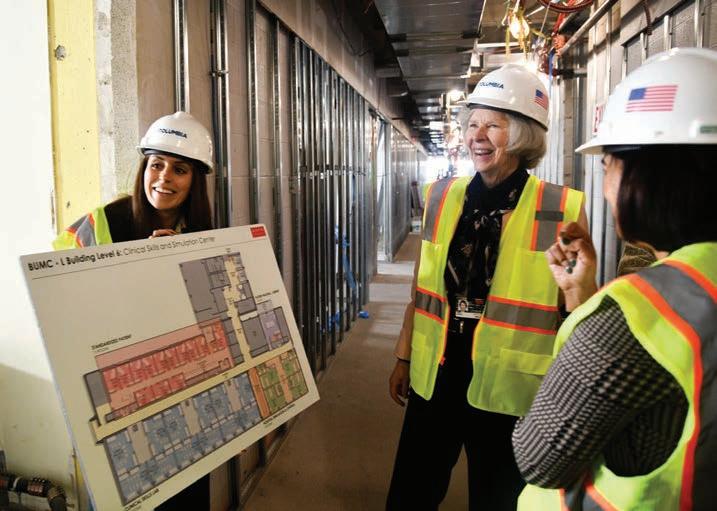
The Rod Hochman Family Clinical Skills & Simulation Center will replace the clinical skills and simulation center that has been housed in the basement of the medical school’s Instructional Building for more than two decades.
A$10M gift by Dean’s Advisory Board Member Rod Hochman, MD’79, CAS’79, and his wife Nancy J. Hochman, Sargent’77,’83, will fund a new, state-of-the-art clinical skills and simulation center designed to enhance the student learning environment involving practiced procedures, physical diagnoses, clinical coordination, and patient communications. “Nancy and I are honored to be able to support the medical school and its students with our donation to establish the Clinical Skills & Simulation Center,” said Hochman. “On the 45th anniversary of my graduation I have been so impressed with the wonderful accomplishments of our school and its graduates. Dean Antman has been a tireless leader and advocate, particularly regarding advancements like the skills and simulation center. We hope this will be a legacy to our present and future students.”
The Rod Hochman Family Clinical Skills & Simulation Center will replace the clinical skills and simulation center that has been housed in the basement of the medical school’s Instructional Building for more than two decades. Located on the sixth floor of the Instructional Building, the new center will feature:
● Space for waiting rooms, 13 clinical skills rooms for teaching, 13 examination rooms for the standardized patient program, and adequate storage.
● Technology including iPads, intercoms, and the equipment of a standard examination room, including blood pressure cu s, otoscopes, ophthalmoscopes, and flashlights.
● A new, user-friendly, web-based, secure healthcare education debriefing platform allowing faculty to view students remotely and provide feedback and evaluations.
● Examination tables and hospital beds, a simulated ER and surgical suite with one-way mirrors and hospital equipment, a new high-fidelity manikin, several new Student Auscultation Manikin systems, and handheld ultrasound machines for point-of-care teaching.
● Classroom virtual reality technology designed to facilitate faculty collaboration for interdisciplinary training with students from other BU schools such as the School of Social Work, Sargent College, and others.
● Projection technology based on the systems used in IMAX theatres, allowing professors and students to attend lectures remotely.
“With this generous gift from Dr. Hochman we will further advance our students’ clinical skills using simulation-based teaching and standardized patient experiences,” said Associate Dean of Medical Education Priya Garg, MD. “This new clinical skills center will give our students dedicated space to engage in situational learning, and face the complexities of medicine before they experience it in real patients. Simulation is an essential active learning method in undergraduate medical education, and we are grateful to have this gift.” ●
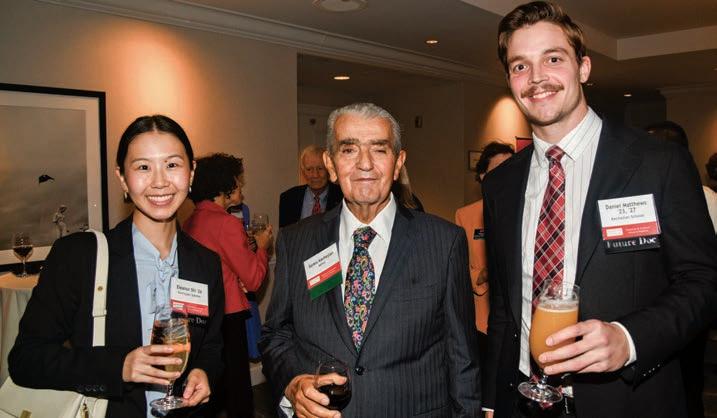
When he graduated from Boston University School of Medicine (now the Chobanian & Avedisian School of Medicine) in 1963, Sarkis Kechejian had accumulated $7,000 to $8,000 in debt, roughly $70,000 to $80,000 today.
“Which I was quickly able to pay o ,” said Kechejian in an interview at a dinner to honor the Chester S. Keefer, MD Society members as well as scholarship donors and their students on September 28 at the Hotel Commonwealth. Named for the former medical school dean (1955–1960), the society was established to recognize the dedicated donors whose total lifetime contributions have reached $100,000 or more.
In response to rising tuition and student debt, Kechejian started a scholarship fund in 1996.
“I was in the position to be able to give back,” he said. “I was able to lighten the burden on these students.”
The medical school’s scholarship endowment has grown from $15 million 25 years ago to more than $150 million today. In addition to recruiting the best candidates and
helping students lower debt, scholarships are instrumental in promoting inclusion, and allow students to choose less lucrative specialties like primary care or pediatrics, which are sta ed at critically low levels in the United States.
“We wanted to assist people to be able to participate in medical education who might otherwise not be able to due to financial reasons,” said Burton Golub, MD’65, of the scholarship fund he founded a few years ago with his wife Lee.
“My wife and I aren’t looking for gratitude and thank-yous. We’re happy to do it, and we’re financially able to do it,” said Golub.
While some donors are modest, even dismissive about their generosity, students are universally appreciative.
“It’s a huge amount of money and I am able to go through medical school with more peace of mind because I don’t have to worry about the financial burden of taking out $400,000 in loans,” said second-year medical student Nnaemeka Chukwudalu Nwoke, MD’27, who received a scholarship from the Golubs and a second one from the Louis Sullivan, MD’58, Endowed Scholarship Fund.
“If someone invests in me, I will break my back to make sure that investment is worth it,” he said. “It is one of the things that has driven me my whole life.”
Nwoke was one of two student speakers at the dinner, which was attended by more than 100 donors and students. At 17, he traveled by himself from Nigeria to the United States to pursue his dream of becoming a doctor.
His early academic success at the University of Southern Florida was tempered by his failure to get into medical school on his first try. It took more than four years of working in various medical positions before he was accepted into the Chobanian & Avedisian School of Medicine in 2023.
“Words simply cannot express how grateful I am for the opportunity to be here,” Nwoke said.
Elizabeth Brown, MD, recalled working as many as four jobs to pay for medical school. A neonatologist, Brown was an associate professor of pediatrics at the school from 1987 to 2016.
“The first two years of medical school were incredibly di cult,” she said. “Basically, I didn’t sleep.
“That really drove my interest in funding scholarships, because people shouldn’t have to do that to follow their dreams,” Brown said. The Dr. Elizabeth Brown Endowed Scholarship Fund requires the recipient to have an interest in becoming a pediatrician or an a liated specialty, although they are not held to that choice should they choose a di erent path.
“I wanted to help support young people who had an interest in pediatrics and were in the same (financial) situation I was in,” she said.
“I’m just in awe of people who choose to give what they have to support others,” said fourth-year medical student Noelle Wojciechowski, who was awarded a scholarship from the Drs. Karen and Elliott Antman Medical Student Scholarship Fund.
Receiving money from the medical school dean was especially meaningful to Wojciechowski.
“It’s a big testament to BU’s commitment to bridging the divide (between the wealthy and those in need of financial help) within medical education,” she said. Her medical interest stems from her father’s
multiple sclerosis diagnosis. As a child, she helped care for him, assisting her mother, a nurse. At age 10, she attended a camp for children of MS patients and was drawn to the physicians who educated them about the condition.
“It was at this point that I began considering becoming a doctor myself,” Wojciechowski said. “I wanted to be able to help people who were afraid, or who were upset. I wanted to be able to explain to them what was happening.”
By high school, her father could no longer work, and the family worried about being able to pay for college and medical school. Wojciechowski said her scholarship has allowed her to consider a career in internal medicine as she applies for a residency postgraduation.
“I’m grateful for the opportunities I’ve had, not only to attend medical school, but to have some of that financial anxiety taken o my shoulders,” she said.
After 48 years as a researcher and professor of anatomy & neurobiology, during which she received numerous teaching awards, Deborah Wilson retired in 2020. Three years ago, she started the Deborah W. Wilson, PhD, Endowed Scholarship.
“It was something I felt I could do that would really make a di erence,” said Wilson. The scholarship requires the recipient to be from New Hampshire where Wilson lives with husband, John Wilson, DMD to help alleviate a shortage of physicians there.
“I think a scholarship helps a student make a decision about what practice they can go into. . . I think it’s better if you don’t owe a lot of money,” said Wilson.
First-year medical student and Wilson scholarship recipient Leila Caplan’s father was a first responder to the World Trade Towers on September 11, 2001, and can no longer work due to health problems stemming from that tragedy.
“We were worried about how I was going to a ord medical school and whether I’d have to push it o for a year,” said Caplan. “Just getting the scholarship and knowing that something was o my plate was amazing. It was something my parents were really worried about.”
Receiving his Kechejian scholarship helped tip the scales in second-year medical student Gurkeerat Singh’s decision to attend BU.
“When I received this scholarship, I felt like the school really wanted me to come and it was one of the big factors for me to attend BU versus other schools,” Singh said.
Haralambos Gavras, MD, emeritus professor of medicine and a primary mentor of students in Graduate Medical Sciences, and his wife Irene Gavras, MD, both immigrated to the United States from their native Greece. They established the Alexis Gavras Graduate Scholarship, mainly intended for Greek students.
“Do you know a better reason (to donate to scholarships) than to help a kid find his way through science?” Gavras asked, nodding at recipient Konstantinos Kontodimas, a fourth-year PhD student who first came to Boston from Greece in 2016 to pursue a BU undergraduate degree.
“It means a lot,” said Kontodimas. “It’s not just the financial aspect, it’s also emotional... that I have people thinking about me.”
Kontodimas believes that being a scholarship recipient is a building block for receiving future grants.
“It is a great steppingstone for someone who wants to go into academia,” he said. “In a world where grants are everything, this can be seen as a grant. It’s a way of looking at somebody’s e orts and recognizing them.”
When they established their scholarship fund two years ago, Martha Skinner, MD, an emerita professor of rheumatology who worked for 50 years at BU, including as
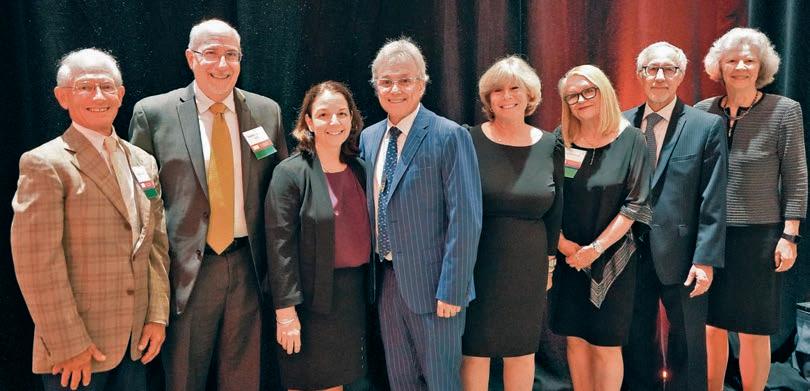
The Keefer Society Class of 2024 includes:
Bronze Members
Philip H. Lovett and Beatrice Liu
Mercury Members
Isabelle A. Katzer
Robert Miselis and Cynthia Miselis
Alan S. Multz, MD’85, and Michelle A. Multz, MD
Tim R. Palmer and Lynne L. Palmer
John Schieltz and Katie Schieltz
Kenneth B. Simons, MD’80, and Wendy A. Simons
David L. Walton, MD’83, and Machiko Nakatani
‘Keefer Society/Scholarship Dinner’ continued
director of the Amyloidosis Center, and her husband, Sumner Stone, MD’58, wanted to donate quietly; they felt no need for students to contact them to express gratitude. But they were happy to meet their scholarship recipient at the Keefer dinner. Michelle Surets, a second-year medical student from Brooklyn, New York, wore a ribbon under her name tag that read “Future Doc.”
“We’re very pleased that we have this wonderful student, who is our named student, and we have the privilege of sitting with her and hearing about her life,” said Skinner, smiling at Surets and placing a hand on her shoulder.
“I can’t think of a better use of our money than to invest in someone and help them learn about medicine and contribute to the world,” added Stone.
The study will test whether Recovering from IPV through Strengths and Empowerment (RISE) or brief advocacy counseling, the most common intervention, is be er for improving self-e cacy and mental health symptoms such as depression among patients with past-year IPV at VA healthcare facilities.
Katherine Iverson, PhD, has received $5.9 million from the Patient-Centered Outcomes Research Institute to study a comprehensive, personalized intervention for patients who have experienced intimate partner violence (IPV).
Iverson, associate professor of psychiatry and a clinical research psychologist at the Women’s Health Sciences Division of the National Center for PTSD and VA Boston Healthcare System, will colead the study with Melissa Dichter, PhD, MSW, a researcher at the VA Center for Health Equity Research and Promotion and associate professor in the College of Public Health at Temple University. The study will test whether Recovering from IPV through Strengths and Empowerment (RISE) or brief advocacy counseling, the most common intervention, is better for improving self-efficacy and mental health symptoms such as depression among patients with past-year IPV at VA healthcare facilities.
RISE was developed to provide patients experiencing IPV with an individualized, motivational, and flexible intervention that addresses safety planning, IPV health effects and warning signs, coping and selfcare, social support, sexual violence over the lifespan, and moving forward while connecting with resources.
The first in her family to attend medical school, Surets said the scholarship from Skinner and Stone was a big vote of confidence.
“It’s great to meet people who have already been very successful and are willing to give back—someone who thinks that you can do it and will help you along the way.” ●
“Early research on RISE suggests it is e ective at improving patients’ self-e cacy and depression symptoms,” said Dichter. “However, it’s not known how well RISE works compared to what patients typically receive for IPV intervention in healthcare settings. That’s what we want to find out.”
The five-year study will randomly assign patients to either RISE or brief advocacy. Participants will answer questions about self-e cacy and depression symptoms before receiving treatment, 12 weeks later, and every three months after that for one year. Researchers will compare which intervention—RISE versus brief advocacy— worked better to increase self-e cacy and decrease depression symptoms.
“IPV is more common among military veterans, so there’s a particular need for more personalized, structured, and comprehensive interventions among this group,” says Iverson. “What we learn from this study is likely to be helpful for improving health outcomes among veterans, and among the general population, as well.”
The study was selected by the PatientCentered Outcomes Research Institute, or PCORI, through a competitive review process in which patients, caregivers, and other stakeholders join scientists to evaluate proposals. ●
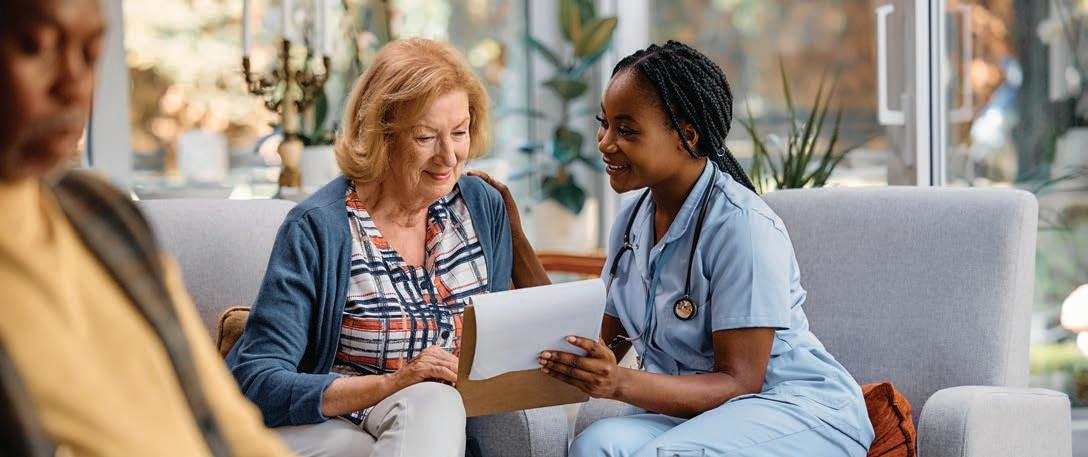
The Greenwall Foundation seeks to make bioethics integral to decisions in healthcare, policy, and research.
Diana Anderson, MD, M.Arch, assistant professor of neurology, has received a one-year, $48,902 Bridging Bioethics Research & Policymaking grant from the Greenwall Foundation for her project, “Improving Long-Term Care Facility Design through Bioethical Peer Review.”
Anderson’s past research has shown that the built space of healthcare environments can function as a healthcare intervention, achieving medicine-like e ects that can profoundly a ect persons living in longterm care (LTC). “However, there is a lack of medical oversight, existing human subject research protections, standards of architectural practice, or other governing protective mechanisms related to the built space of LTC facilities,” she says.
Anderson is a board-certified healthcare architect and geriatrician. As a “dochitect,” (doctor + architect) she combines educational and professional experience in both medicine and architecture. She has worked on hospital design projects around the world and is widely published in architectural and medical journals and books.
A past fellow at the Harvard Medical School Center for Bioethics, she continues to explore space design and ethics, especially in the context of nursing homes and institutional living for older adults. She is cofounder of the MGB Health Design Lab, uniting clinical, architectural, and design professionals with a mission to advance the collaboration between healthcare and design across four domains: research; education; clinical practice and innovation; and bioethics and policy.
The Greenwall Foundation seeks to make bioethics integral to decisions in healthcare, policy, and research. It is a nationally recognized private foundation with assets of about $100 million, awarding approximately $3–4 million annually in support of its mission to expand bioethics knowledge to improve clinical, biomedical, and public health decision-making, policy, and practice. ●

Budson will evaluate neurofeedback to amplify theta oscillatory brain activity during waking rest, a novel, nonpharmacologic method with the potential to improve memory consolidation in healthy older adults and those with earlystage Alzheimer’s disease (AD).
Andrew Budson, MD, professor of neurology and associate director of the Alzheimer’s Disease Research Center, has been awarded a two-year, $150,000 grant with collaborator Daniel Levy, PhD, professor of psychology at Reichman University, Herzliya, Israel, from the US Israel Binational Science Foundation for their research, “Improving subsequent memory in aging and Alzheimer’s disease by theta oscillatory brain activity modulation.”
The hippocampal theta oscillation is a key brain signal that underlies various aspects of cognition and behavior, including memory and spatial navigation. Budson will evaluate neurofeedback to amplify theta oscillatory brain activity during waking rest, a novel, nonpharmacologic method with the potential to improve memory consolidation in healthy older adults and those with early-stage Alzheimer’s disease (AD).
Memory consolidation is the process by which memory traces of newly encoded events are stabilized such that the learning will be long lasting. “Consolidation processes during sleep or waking rest may be medi-
ated, in part, by theta oscillations of 4–8 Hz. Increases in theta oscillations during learning has been linked to successful subsequent memory. Therefore, upregulating theta power during waking rest might benefit subsequent memory,” explains Budson, who also is chief of cognitive & behavioral neurology and director of the Center for Translational Cognitive Neuroscience at the Veterans A airs (VA) Boston Healthcare System.
Budson has received government research funding since 1998, including a National Research Service Award and a Career Development Award in addition to an NIH Research Project Grant (R01). ●
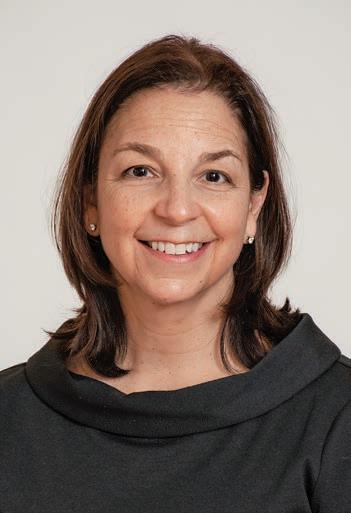
IN THIS ISSUE OF BU MEDICINE, WE ARE PROUD TO CELEBRATE the diligence, devotion, and compassion of alumni who are advancing global health through their impactful work. We feature inspiring insights from Mardia Stone, MD’78, MPH, Christopher Strader, MD’15, MPH’09, and many others whose stories shed light on the complexities of global health. Through continued learning and dedication, they are furthering the practice of medicine and public health far beyond the walls of our institution. Our alumni’s diverse expertise in clinical, public health, and policy skills has demonstrated advancements in health and systems of care around the world. We are pleased to share their accomplishments and their approaches to medicine in a global capacity.
In May, we celebrated Golden Reunions for the classes of ’69, ’74, and ’75, welcoming alumni back to where they began their study of medicine. During their return to campus, they recounted their own journeys through these halls while seeing and learning about campus enhancements and curriculum changes we have instituted over the years.
September marked a historic moment for us with the inauguration of Dr. Melissa Gilliam as president of Boston University. For the rst time in 19 years, we witnessed the swearingin of a new BU president, also signifying a new era for our institution. It was truly an honor for me to a end this signi cant event and join over 60 of my academic colleagues from the School of Medicine in the ceremonial procession. This celebration was coupled with Alumni Weekend, allowing alumni to celebrate this new beginning while enjoying a chance to reconnect with classmates and friends at their reunion dinners.
At the annual Alumni Award Luncheon, we honored Louis Sullivan, MD’58, Christopher Andry, MPhil, PhD’94, and Jennifer Luebke, PhD’90, who were recognized for their extraordinary careers with the inaugural Dean’s Lifetime Achievement Award and Graduate Medical Sciences Distinguished Alumni Awards, respectively. With friends, family, colleagues, and classmates present, these remarkable alumni were celebrated for their accomplishments and lifelong dedication to medicine and science.
We have begun the process of choosing candidates for our new alumni awards, highlighting the varied and notable careers of our alumni. In late 2025, we will honor the rst recipients of many of these awards and cement this exciting initiative.
We remain steadfast in our commitment to strengthening the institution’s connection with our alumni. We take great pride in your work and achievements and look forward to reconnecting with you.
We hope to see you at our alumni events this year. Whether you are interested in mentoring current students or reuniting with former classmates, please visit the alumni pages of our website for opportunities to engage.
Sincerely,

Heather Miselis, MAMS’00, MPH’00, MD’04 Associate Dean for Alumni A airs

On September 28, Louis Sullivan, MD’58, Christopher Andry, MPhil, PhD’94, and Jennifer Luebke, PhD’90, were honored at the annual Alumni Awards Luncheon in Hiebert Lounge.
Sullivan, former secretary of health and human services during President George H.W. Bush’s administration, received the inaugural Dean’s Lifetime Achievement Award.
“I’ve received a number of awards during my career, but this is about the most significant,” Sullivan told an audience of more than 90 alumni and faculty. “I’m honored by this. I’m thankful to BU for making my career possible.
“The work that you do, and that other graduates of this school do, really touches the lives of people, not only here in America, but around the world.”
Andry, professor and chair of pathology & laboratory medicine, and Luebke, Waterhouse Professor and chair of anatomy & neurobiology, received Graduate Medical Sciences Distinguished Alumni Awards.
“I’m humbled to be standing in front of you. It’s a great honor to be recognized,” said Andry, who has worked at BU and primary teaching a liate Boston Medical Center (BMC) for more than 40 years. “I just reflect on how fortunate I’ve been . . . to be able to work, learn, and study, and enjoy this community.”
“This award is acknowledgement of what’s possible when you have a support system that is truly excellent, and when you have a support system where it’s from the top all the way through to your students and your trainees,” said Luebke, who has worked at BU for 28 years.
“We have people who are dedicated to high standards of ethical behavior, excellence in research, and excellence in education—and that’s all found here.”
Born in Atlanta and raised in rural Georgia, Sullivan came from a highly segregated South. A Morehouse College graduate, he was accepted to Boston University’s medical school in 1954 as the only Black student in his class and recalled being warmly welcomed there.
“It was my first experience living in a nonsegregated society,” he said.
In 1966, he became the codirector of hematology at Boston University Medical Center and founded the Boston University Hematology Service at Boston City Hospital, now known as Boston Medical Center. He was a professor of medicine at the school, leaving to direct the new Morehouse College medical program in 1973, and subsequently serving as founding president and dean of the new Morehouse School of Medicine.
Sullivan was appointed secretary of Health and Human Services in 1989. He served as cochair of the President’s Commission on HIV and AIDS (2001–2006), and chairman of the President’s Commission on Historically Black Colleges and Universities (2002–2009), and is currently chairman of the Sullivan Alliance to Transform the Health Professions, a Washington, D.C.-based organization with the mission of increasing the racial and ethnic diversity of health professionals in the United States.
Sullivan reflected that in the aftermath of Rev. Martin Luther King’s death in 1968, he addressed chronic low recruitment of Blacks to medical schools by joining with then-medical school dean Franklin Ebaugh, Jr., MD, to raise $40,000 for a fund to bring
“I’m so grateful to work with you, and I am 100 percent con dent in the future of biomedical research and biomedical education when I see the extraordinarily gi ed and talented people who are going to be coming a er.”
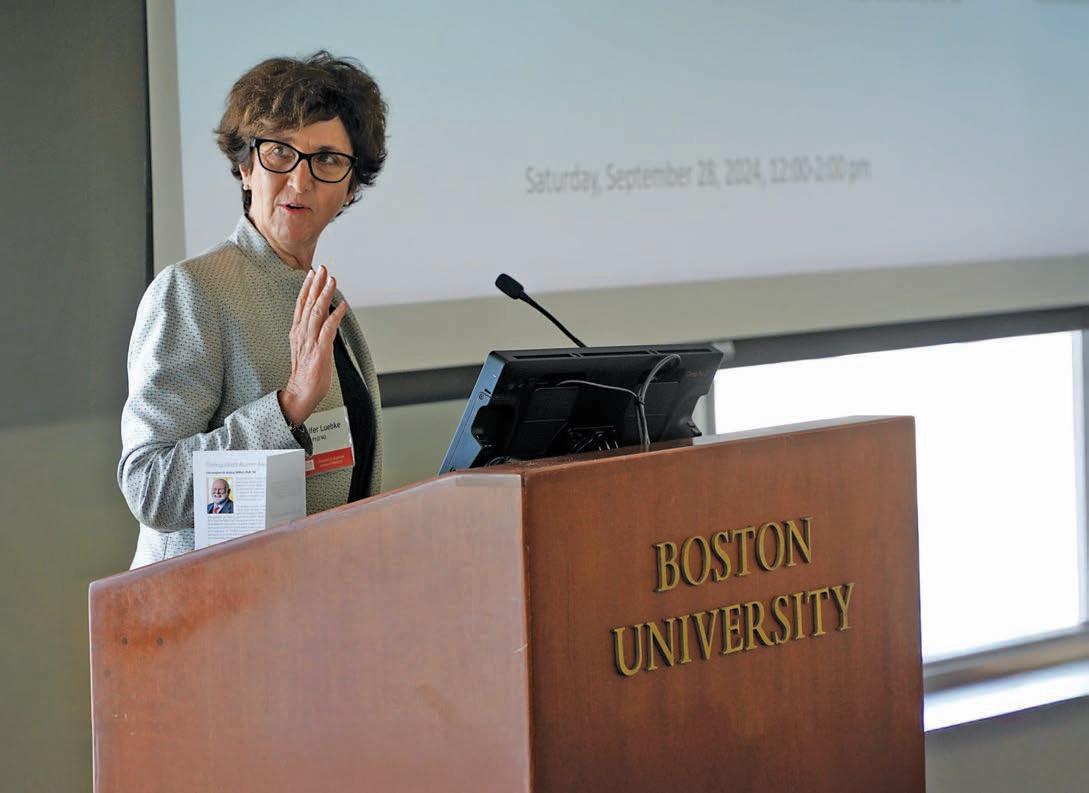
Black students to BU’s medical school. The school sponsored a recruitment weekend in which most New England medical schools participated, resulting in a significant increase in Black students in all but one of those institutions in the following year’s class.
“I’m pleased that the Chobanian & Avedisian School of Medicine has continued to work on that legacy and has contributed even more,” he said.
Andry talked about a lifetime of work at BMC and its predecessors, Boston City Hospital and University Hospital. He is proud that he, his wife, and his son are BU alumni.
“We always embraced the mission of Boston University ensuring that there is always opportunity for people of all walks of life to be able to come and receive an education,” Andry said. “BU has been a leader in the city in thinking about how to create opportunity for people and, of
course, in our work at Boston Medical Center with a particular focus on the health equity space.”
Luebke noted that she’d spent her entire professional life on the Medical Campus.
“I’m surrounded by individuals who have nurtured me and helped me . . . and I feel that at Boston University we have that kind of culture where people help each other to do the best that they can,” she said.
Thanking the teachers, mentors, and coworkers she’s had in her long career at BU, Luebke also said she is inspired by the students and young researchers she works with now. “I’m so grateful to work with you, and I am 100 percent confident in the future of biomedical research and biomedical education when I see the extraordinarily gifted and talented people who are going to be coming after,” she said, adding that she will continue to mentor students and junior
faculty and “ensure that other people benefit from this great institution and will be as happy and productive here as I have been.”
Outgoing Alumni Board President Demetrios Vavvas, MD’99, introduced his successor, Daniel Oates, MD’00.
“I look forward to a very exciting year ahead, collaborating with our alumni board and rolling out the expanded alumni awards, which will more broadly recognize the outstanding and innovative work of many of our alumni,” said Oates.
Looking to capture the diversity of alumni backgrounds, areas of study, and scope of careers, the alumni board recently expanded the alumni awards from two to five. They now include the Advocacy, Equity, and Social Justice in Medicine Award; the Dean’s Lifetime Achievement Award; the Distinguished Alumni Award; the Emerging Leader Award; and the Humanitarian Award. Jake Mackey ●
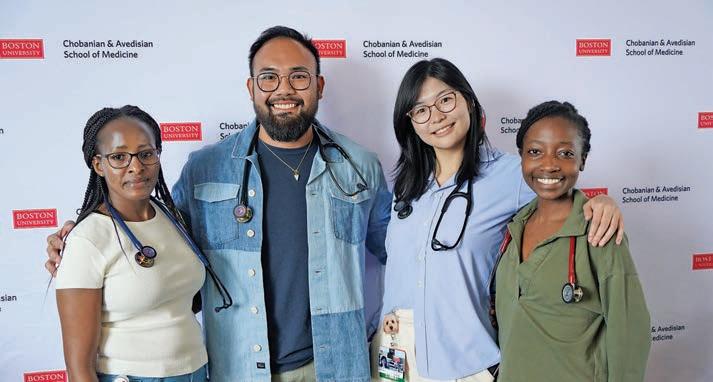
First-year medical student Anshika Gupta was planning to follow the advice of Anna Hohler, MD’98, FAAN, who delivered the Seventh Annual Lorraine Stanfield, MD, Memorial Doctoring Lecture on August 26. Hohler, who serves as the first female chair of neurology at St. Elizabeth’s Medical Center in Brighton, told the 141 first-year medical students in attendance to take the stethoscope, ophthalmoscope, otoscope, tuning fork, and reflex hammer they received as gifts from alumni donors, and practice on anyone and anything, even the family cat.
“If I had a cat, I definitely would do that, but all of my friends are would-be targets and I am going home soon and can’t wait to test it on family members,” said Gupta.
Although physicians are now far more likely to carry these tools in the oversized pockets of their white coats than in medical bags, the tools remain an iconic gift from alumni welcoming newcomers to the medical community.
“I was very excited to be receiving my stethoscope and all the other medical equipment,” said Gupta. “It truly feels like we are on the journey to being doctors.”
The lecture was named for Lorraine Stanfield, a much-beloved member of the BU and Boston medical community who died from breast cancer in 2017 at age 56. Stanfield spent two decades taking care of medically underserved patients at Dorchester House Health Center, now known as DotHouse Health.
“The way that she was so connected to her community is something I hope to do when I am a practicing physician,” said first-year medical student Kiel McGowan, who began medical school with a master’s in public health and hopes to work in community health.
Speakers recalled Stanfield’s a nity for medical education and the physical examination.
“She loved teaching the physical exam and the fact it could show us these clues,” said Stanfield’s friend Kathryn Harris, MD, an internist and primary care provider at DotHouse. She recalled when Stanfield, during an emergency room visit for her illness, talked the medical student assigned to her through her own physical examination.
“It was a pleasure to see how she took to the students and how she really cared for every individual student’s education,” said Hohler, who worked with Stanfield at BU. “She wanted to make sure that every (student) . . . had the opportunity to not just learn about the theory and practice of medicine, but also get some tangible practical experience.”
Like Stanfield, Hohler has received many BU and national teaching awards, including the medical school’s highest teaching honor, the Stanley L. Robbins Award for Excellence in Teaching. Hohler turned her lecture into a teaching moment by demonstrating how to conduct a physical examination, explaining the science behind one of the most familiar of patient experiences.
“I use every one of these tools every day,” Hohler said.
Although artificial intelligence and increasingly sophisticated technologies are rapidly changing modern medicine, Hohler stressed that relatively unsophisticated tools and the physical exam are still crucial to patient care, providing information that helps physicians pick the right test and technology and fostering the patient/ physician connection. Hohler compared the relationship to using a calculator while understanding the math underpinning its calculations.
“Right now, AI isn’t able to wield a reflex hammer,” she said. “Being able to do these practical things in terms of the evaluation of a patient is going to serve you throughout your entire career.”
First-year medical student Annika Kamet believes there is room for both technology and the healing touch represented by the physical exam.
“I feel they give you different pieces of the puzzle, and of course it is more comforting to the patient to be able to do an examination physically, with your hands and with a stethoscope, instead of relying on (a machine),” said Kamet.
At the close of the lecture, students wrote thank-you notes to donors who financed the medical tools they received.
“I’m super grateful,” said McGowan. “Medical school is expensive, so it really does make a difference.” ●
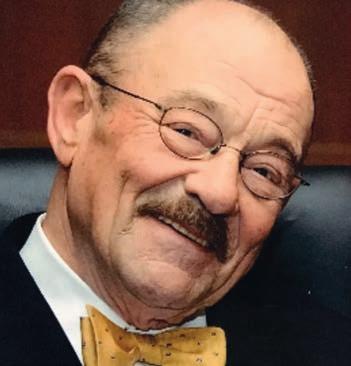
An amputee from birth, Olsson learned to ski with adaptive equipment in his 40s and advocated for inclusivity in sailing and equity in sports.
Carl A. Olsson (MD’63, FACS), a groundbreaking surgeon who served as professor and chair of urology at Boston University School of Medicine and then as urologist-in-chief at New York-Presbyterian/Columbia University Irving Medical Center, died on October 3, 2024. Born in Boston on November 29, 1938, Olsson grew up Winthrop, Massachusetts, and graduated from Bowdoin College in Brunswick, Maine.
Olsson received his medical degree from Boston University in 1963 and completed his surgical internship and residency at Massachusetts Memorial Hospital (now Boston Medical Center), a residency in urology at VA Boston Medical Center (VABMC), and a fellowship in urology at the Cleveland Clinic.
Olsson was named chief of urology at VABMC in 1969. He was a pioneer in ex-vivo renal surgery and auto transplantation, including the first use of immunotherapy in bladder cancer and the first use of alpha blockade to treat BPH symptoms.
In 1973, Olsson became professor and chair of urology at Boston University School of Medicine. His studies of urodynamics with Robert J. Krane, MD, and Mike Siroky (MD’70, CAS’70) led to the establishment of the first clinical urodynamics laboratory in New England at University Hospital in 1976.
In 1980, Olsson left BU to become chair of the department of urology at Columbia University Vagelos College of Physicians and Surgeons and urologist-inchief at New York-Presbyterian/Columbia University Irving Medical Center, roles he held for 25 years.
He remained committed to supporting BU medical students, establishing the Carl and Mary Olsson Scholarship Fund in 2008.
Olsson published more than 400 articles, journals, and books on urology and received numerous awards for his research significantly advancing contemporary surgical techniques in urology. He received the school’s Alumni Association School of
Medicine Distinguished Alumnus Award in 1985 and the Boston University Alumni Award in 2007.
Olsson also was a passionate sailor, a love that began in his youth in Boston Harbor. He described the Larchmont Yacht Club on Long Island Sound, New York, as his second home and avidly competed in many sailing competitions over the years, including many Newport-to-Bermuda races and a transatlantic trip to Cork, Ireland, with his son.
An amputee from birth, Olsson learned to ski with adaptive equipment in his 40s and advocated for inclusivity in sailing and equity in sports. While in Boston, he supported what is now called the New England Healing Sports Association and competed regionally in NASTAR (NAtional STAndard Race) races, winning a medal in the slalom at the Colorado Paralympics. Olsson also won US Sailing’s first Adaptive Championship.
Olsson is survived by his wife Mary, daughter Ingrid Ellison, son Leif Eric Olsson (MD’94), and five grandchildren. ●
Lloyd Price of Concord, Massachusetts, writes, “Still working part time. Recently celebrated our 50th anniversary and enjoying our grandchild.”
Arthur Brawer of Long Branch, New Jersey, writes, “I am currently in my 49th year of solo rheumatology practice in Long Branch, New Jersey. During the first 44 years of that practice, I was the director of rheumatology at Monmouth Medical Center in Long Branch. Appointments as an associate clinical professor of medicine at Drexel University School of Medicine and Robert Wood Johnson School of Medicine have been complemented by the publication of 50 peer-reviewed manuscripts and two books. These scholarly pursuits reflect my research interests in new arthritis conditions, new arthritis treatments, physical trauma and arthritis, alternative medicine, product liability issues, environmental contamination, numerous traditional rheumatic conditions, and vaccine-induced toxicity.
“During the latter half of the 1990s I was invited to give testimony before the United States Congress, Health and Human Services, the Food and Drug Administration, aides to President Clinton’s chief healthcare advisor, the director of the O ce of Women’s Health at the White House, a domestic policy advisor to Vice President Gore, and the United Nations.
“My research has attracted the attention of the Harvard School of Public Health, The World Health Organization, The Lancet Commission on Pollution and Health, and the United Kingdom COVID-19 Public Inquiry Commission.
“I testified at the Federal Vaccine Injury Compensation Program in Washington, D.C. regarding vaccine-induced toxicity and formulated a new theory (“The Perfect Storm”) encompassing mechanisms of disease causation in vaccine recipients who have developed immunization-induced chronic ailments. I am a firm believer that patients need to be their own treatment advocates, but they can only do so if they are in possession of all the relevant treatment facts.
“Civic activities have included fundraising for the New Jersey Chapter of the Arthritis
Foundation, 44 years of noncompensable operation of the arthritis clinic at Monmouth Medical Center, a prior weekly newspaper column, five years as president of the New Jersey Rheumatology Association, and public educational seminars. I am married 55 years to my Asbury Park High School sweetheart, Carol Golden. We have two children, ages 53 and 50, and five grandchildren, ages 15 to 21. We continue to reside in Monmouth County in central New Jersey.”

Paul Kaywin of Coral Gables, Florida, writes, “My wife Ellen and I have been traveling with Neil Stahl (MD’73) and his wife Sherri for the past few years (Southeast Asia, Australia, New Zealand) and just returned from Japan. I’m retiring this year after 45 years practicing medical oncology/hematology at the Miami Cancer Institute and Neil retired in 2022 from his rheumatology practice. We have a daughter, son, and one granddaughter. The Stahls have a daughter and a son.”
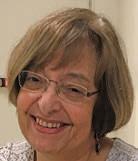
Jane Siegel of San Diego, California, writes, “I have recently retired after working for six years in the California Deparment of Public Health, HAI Program. Before that, I worked at the Corpus Christi State Supported Living Center for Adults with Disabilities (one year) and UTSW in Pediatric Infectious Diseases (36 years). Enjoying San Diego, where I live nearby two grandchildren. My daughter and her husband are spending much time in Singapore for a job commitment.”
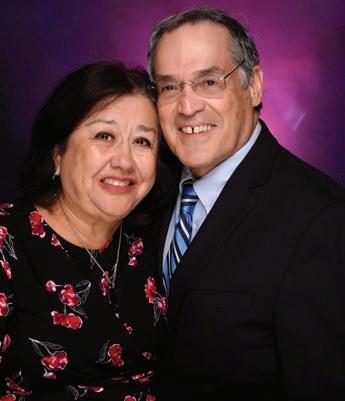
Lee Anderson of Fort Worth, Texas, writes, “I retired happily eight years ago from a large nephrology practice in Fort Worth, Texas. These days, I spend much of my time traveling with my wife, visiting our children, and overseeing several real estate projects, including the construction of a new medical o ce, which is expected to be completed in early 2025. Retirement has been very enjoyable, keeping me busy with things I didn’t have time for during my 35 years of practice. Earlier this year, my wife and I visited Boston, a city we’ve enjoyed many times before. We always love reminiscing about my brief time at BUMC. My advice to everyone is to make the best of what God has given you and spend time on the things that bring you joy and motivation. Time passes by so quickly, so don’t fall into the trap of putting o what you love the most. Always strive for a healthy balance in life and make sure to prioritize time with family and friends.”
Andrew Breuder of Bedford, New Hampshire, writes, “Still doing some teaching as an adjunct instructor at the Southern New Hampshire University School of Engineering, Technology, and Aeronautics. I teach a basic course in air tra c control and at the beginning of the semester need to explain why a physician is teaching this course. Also teach a course in aerospace physiology/human factors in aviation. Have gone to California twice to teach one day of a
10-day course in aircraft accident investigation, specifically blood-borne pathogens, human factors analysis & classification, and aerospace toxicology.”
John Herzenberg of Boulder, Colorado, writes, “I fulfilled a long-standing promise to Merrill that I would retire when we had our first grandchild, and move to the city where that child lives. I thought it was going to be daughter number three in Miami, but daughter number two in Boulder beat her to the punch. We retired last summer, and moved to beautiful Boulder, Colorado. Truly an amazing college town nestled in the foothills of the Rockies. Retirement has brought me many roles: grandfather, emeritus faculty at Sinai Hospital, and continued involvement in research, publishing, and teaching. My clinical work this past year is mostly confined to helping out with surgeries on international missions: Liberia, Nepal, Israel x2, and Ukraine. I also spend one day per week working for my son-in-law fulfilling orders for his jeans activewear business!”
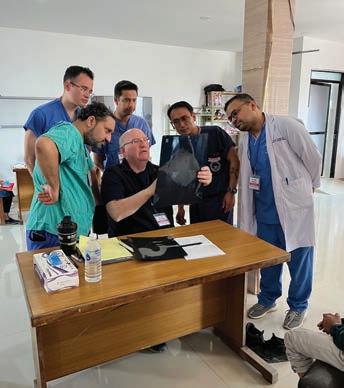
Arnold Toback of Mt. Kisco, New York, writes, “After internal medicine residency, I completed a dermatology residency and have been in practice in New York City since then. I continue to be on the teaching faculty at Columbia University. I have been married these last 40 years, have three children, with six amazing grandchildren (so far). Out-
side of medicine, I have been fortunate to continue pursuing musical theater with the occasional minor movie or television role. If my luck continues I would love another 20 years of medical practice.”

Thomas Morris of Kingston, Massachusetts, writes, “On July 1, 2024, I closed my solo private practice in pulmonary disease in Brockton, Massachusetts, after nearly four decades of practice there. I keep busy as a consultant and Freemason.”

Brian Gilfeather of University Place, Washington, writes, “I’m enjoying chau euring my Tacoma Youth Symphony 12-year-old violinist son (going six years strong) in the great Pacific Northwest! My best to all 1986 Classmates!”
Doreen Parkhurst of Boynton Beach, Florida, writes, “I have retired from practicing emergency medicine. I am engaged in professional patient advocacy to help patients
and families who are dealing with a daunting diagnosis, confusing treatment options, or issues of aging and who need help understanding the disease, treatment options, and choices so that they can make informed decisions about healthcare that are consistent with their values.”
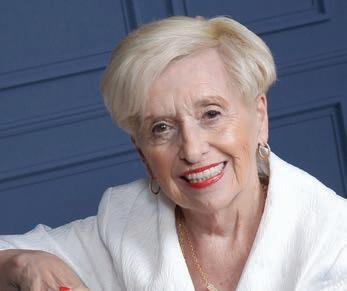
Thomas Morgan of Franklin, Tennessee, writes, “After a couple of years as medical director, experimental medicine, at BioMarin Pharmaceutical in San Rafael, California, I have returned to full-time practice of medical biochemical genetics as professor of pediatrics at West Virginia University School of Medicine. Snowshoe Mountain is my home away from home in West Virginia. I love hiking. The history of medicine remains a passion of mine, and I just finished a master’s degree in history from Harvard Extension School, with a thesis focused on the role of science in the eugenics movement. I wish everyone well.”
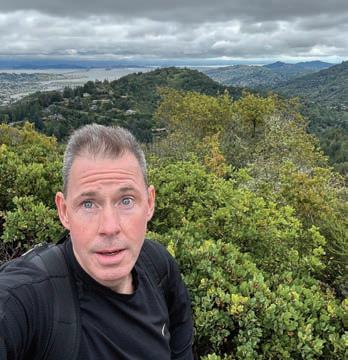
Demetrios Vavvas of Boston, Massachusetts, writes, “I am enjoying life in Boston and academic medicine at Mass. Eye and Ear, taking care of patients, directing the retina service, and running a translational lab. I keep busy outside of work with traveling, hiking, and photographing the beautiful New England that I so much love and enjoy. I have one nephew who is in his last year at Boston College majoring in chemistry, and enjoy my parents when I visit Greece or when they visit here. Feeling proud every single day of the education I got at BU and cherish the memories of my superb humane classmates who truly cared what medicine is all about.”
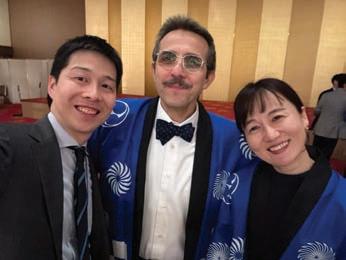
Aradhana Kaushal of Lexington, Kentucky, writes, “I was recently promoted to full professor in radiation medicine and appointed assistant dean of the Rural Physician Leadership Program.”

Paul Bower of Port Saint Lucie, Florida, writes, “We recently celebrated the first anniversary of opening our private practice, Bower Urology. Currently consisting of myself and a PA, we will expand to a second location this year to accommodate our onboarding urologist, Dr. Tod Fusia.”
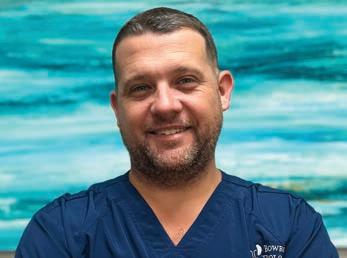
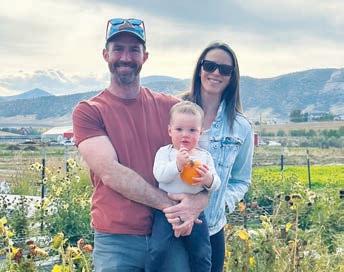
Bobby Carey of Denver, Colorado, writes, “Ronan, Lindsay, and I have been living the Denver mountain life! Shout out to the BUMSquad, flag football champs (for life).”
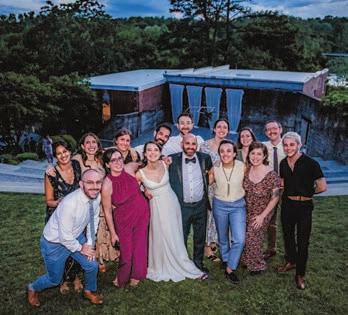
Sarah Morgan of Rochester, New York, writes, “Seven years after meeting at BU orientation, Dan Weinberg (MD‘21) and Sarah Morgan were married in Durham, North Carolina, with many amazing BU friends in attendance. We are grateful for the community that has lasted long since graduation and to BU for bringing us together. We both just completed internal medicine residencies at Duke and are heading to Rochester, New York, for fellowships!” ●
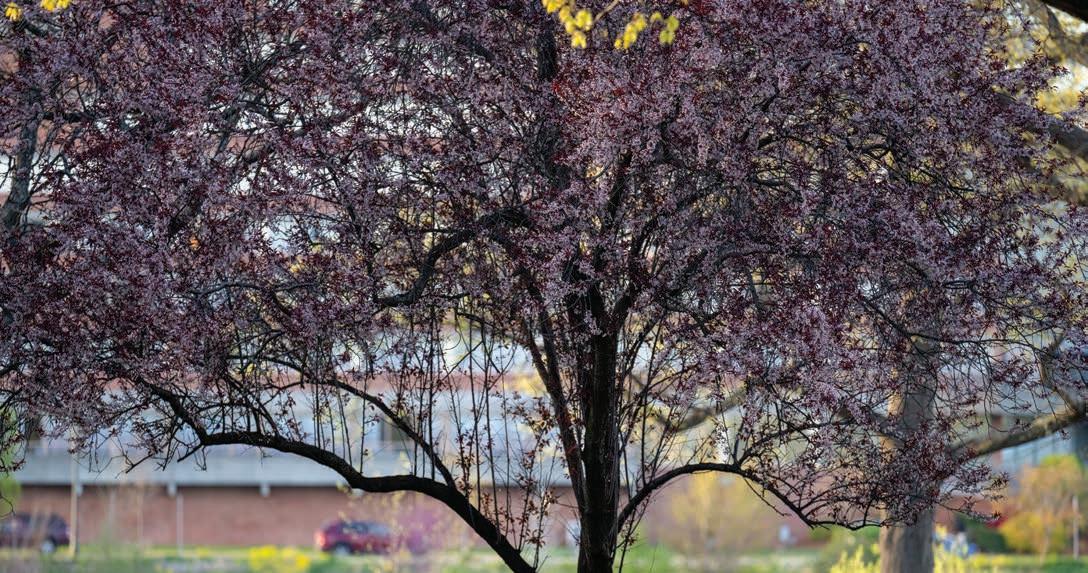
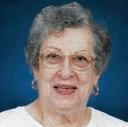
Nadya Konikov Bleisch of Ballwin, Missouri, passed away September 11, 2023.

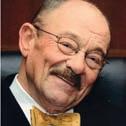
Carl A. Olsson of Brookline, Massachusetts, passed away October 3, 2024.
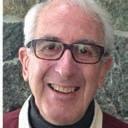
Vincent Russo of Newbury, Massachusetts, passed away March 27, 2024.
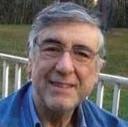
Paul Gitman of New Hyde Park, New York, passed away June 16, 2024.
Samuel Bergman of Hancock, Maine, passed away April 2, 2024.

Ilana Feuerstein of Brookline, Massachusetts, passed away July 13, 2024. ●
to Boston University in your will is a simple way to make a real di
It’s easy—and rewarding. Take the time now to make sure that your will reflects your intentions to care for your family and the people and causes that matter most to you.
If you include a gift for BU in your estate plans, you will have the satisfaction of knowing that future generations of students will benefit from your generous legacy.
To learn more about how you can make a gift in your will to support BU, contact Boston University Planned Giving at 800-645-2347 or opg@bu.edu, or visit bu.edu/plannedgiving.
Download a complimentary copy of our Estate Planning Guide at bu.edu/estateguide.
